The historic city centre of Rouen is a “must-see”. It would be a shame to pass through without a stroll through its fascinating heritage: gothic churches and mansions, restored half-timbered houses, well-maintained public gardens… the “city of 100 bell towers” from the words of Victor Hugo has underwent a costly upmarket restoration of its historical centre, largely pedestrianised.
[lwptoc]
The Old Town of Rouen

The town comprises about 2,000 half-timbered houses, of which half have been restored. The State has listed 227 houses as historical monuments. This makes Rouen one of the first six cities in France in terms of historic architectural richness, despite the destruction during the Second World War when a quarter of the houses in the town’s centre were burnt down.
Half-timbering techniques in Rouen
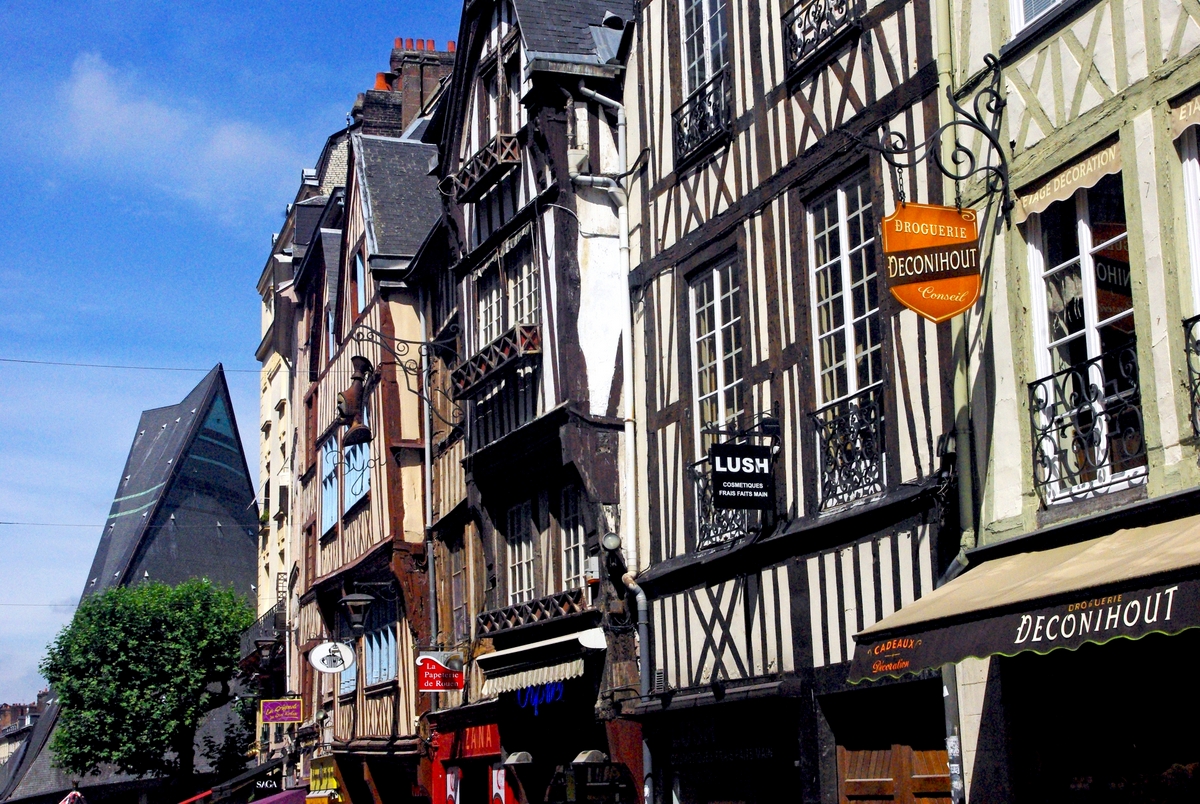
Rouen is reputed for the picturesque cobbled street of its historic centre. Charming half-timbered houses used to be built on waterproof stone bases, some of them with richly decorated corbellings made of oak. This construction method developed during the 14th century when the previous use of long pieces of timber was considered unaesthetic and unsuitable to the new architectural style. By saving space on the ground while gaining room in the houses by corbelling over the street, their owners minimised taxation, which was calculated on the footprint of the site. Moreover, it protected the facade’s timber from the rain. Some experts date a few of the houses along the Rue du Gros Horloge to before the time of Joan of Arc’s death at the stake in 1431. Corbelled houses ceased to be built after the 16th century for safety reasons, in order to protect the city from disastrous fires, which could spread quickly among corbelled houses standing so close to each other.
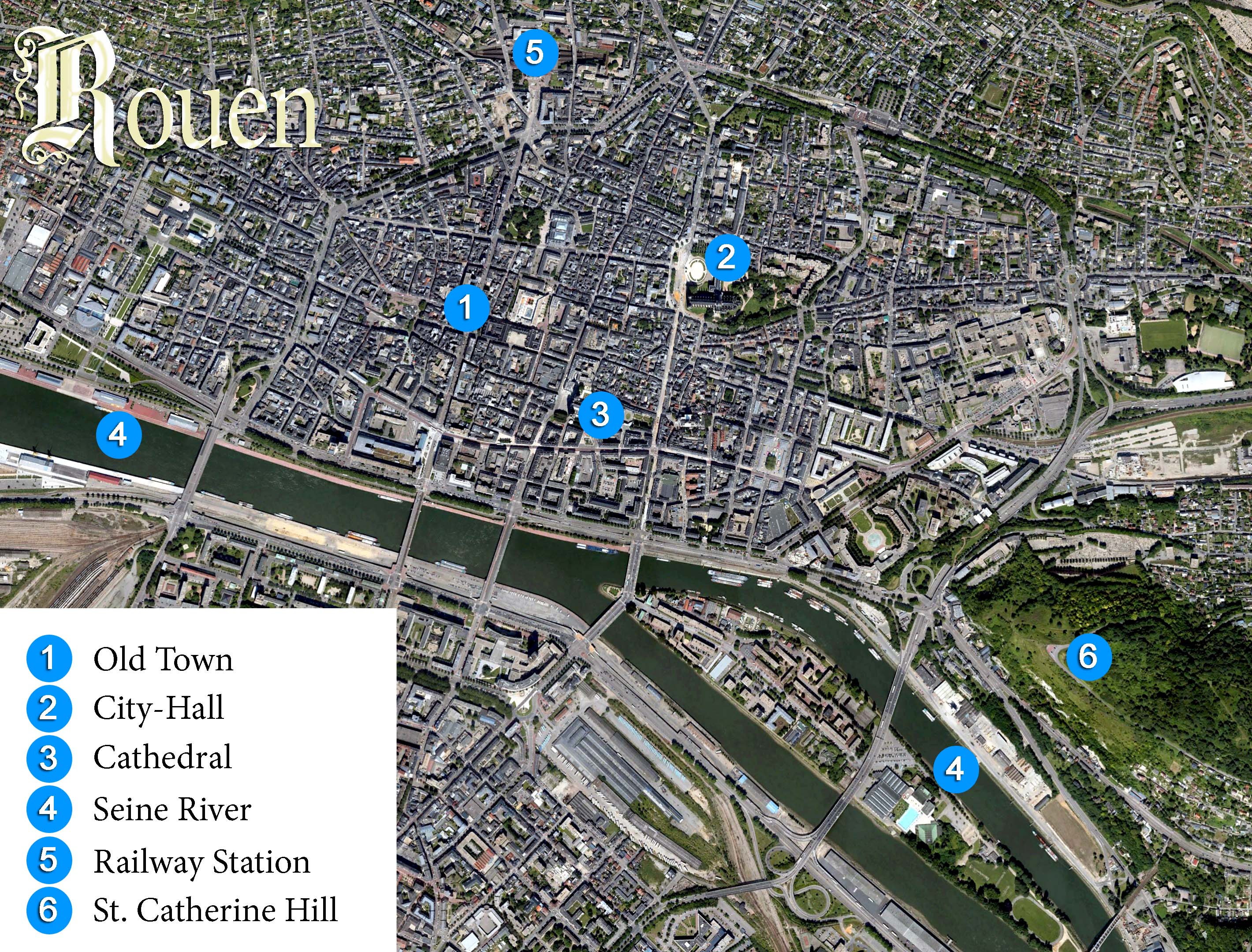
Churches of Rouen
From the words of Victor Hugo, Rouen was the City of one hundred bells due to the many churches that were found in the town. The old town of Rouen has kept many of these sanctuaries from the Middle-Ages and despite the destruction of World War Two, the city boosts in some of France’s finest churches.
Notre-Dame Cathedral of Rouen
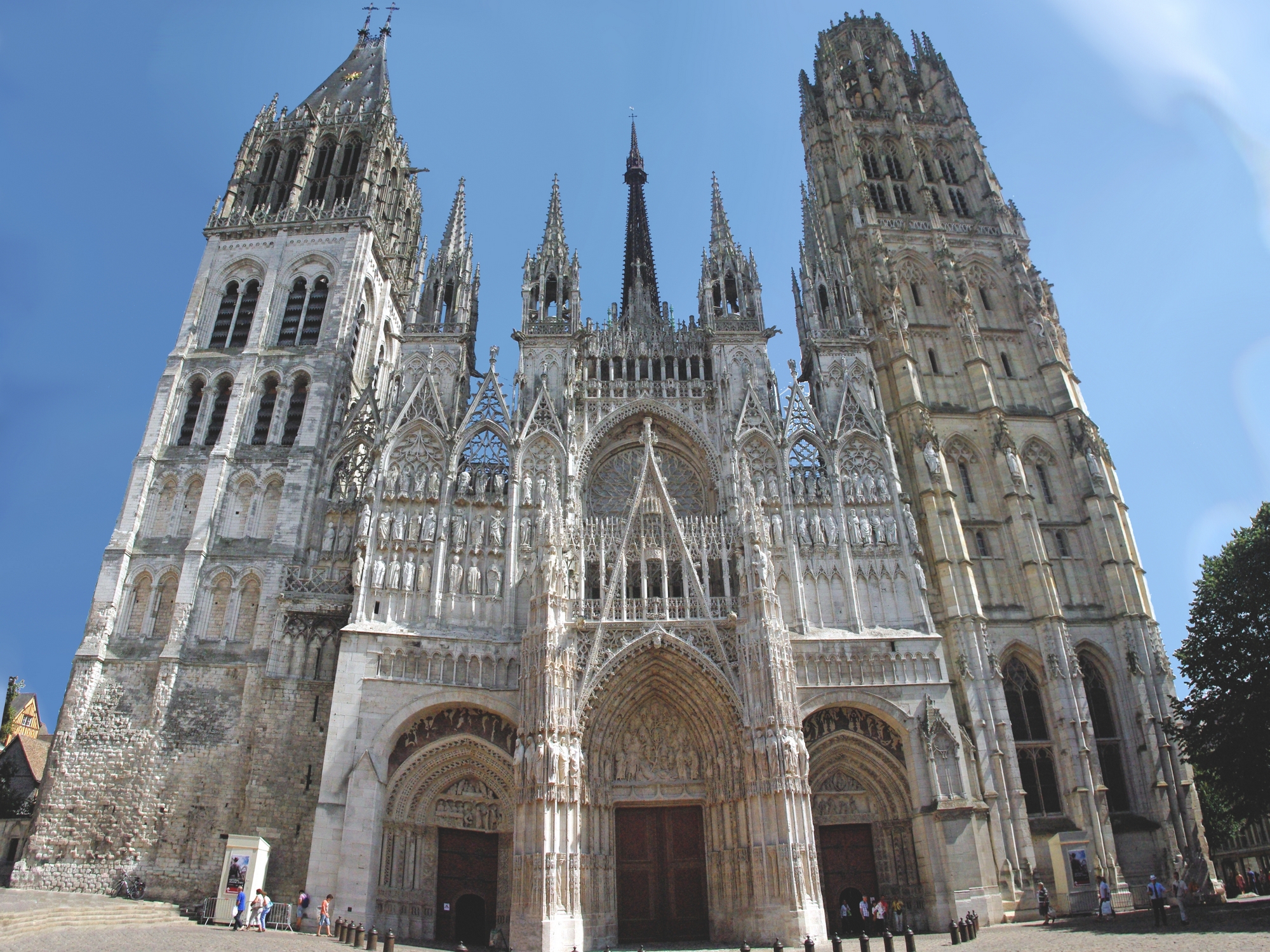
Rouen’s most distinctive monument, seen from far away, is its lofty and imposing cathedral, whose spire stands 151 metres high. From the Place de la Cathédrale, the church appears in all its glory, with the Tour de Beurre (butter tower) to the right and the Tour Saint Romain to the left.
Find out more about Rouen Cathedral.
Saint-Maclou Church
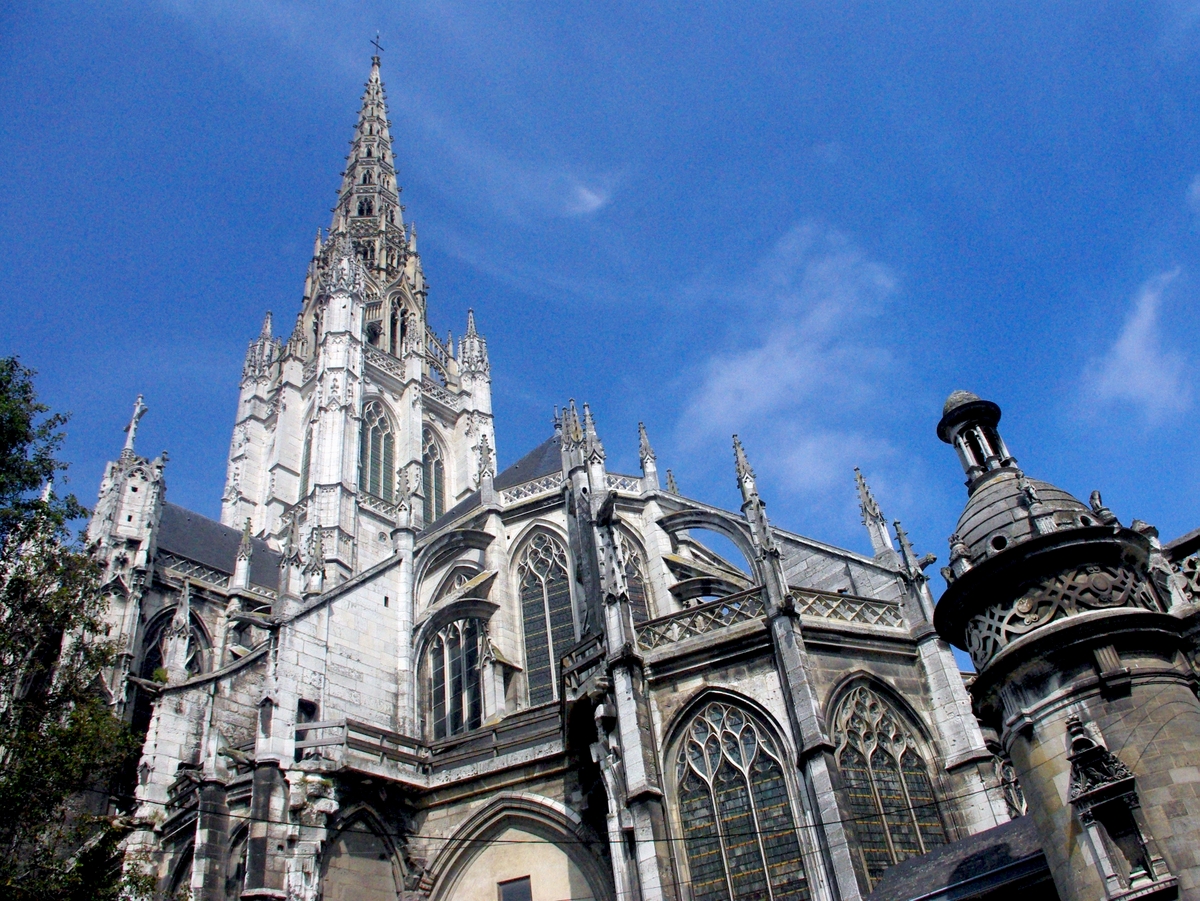
The Church of Saint-Maclou is arguably one of the most striking churches in Rouen. A Flamboyant church dedicated to a Breton Patron Saint known as Malo, it is considered one of the best examples of Gothic architecture in Rouen, alongside with the cathedral and Saint Ouen. Saint Maclou, built from around 1435, is often cited as a church of monumental design in miniature.
The design of the western towerless facade is striking. Its five gabled porches are arranged in a semi-circle under a rose window and a pyramid-like succession of triangular lines.
The church was damaged by bombs during the Second World War. The few original stained-glass windows that escaped destruction are often mixed with more modern elements.
Find out more about the Church of Saint-Maclou.
Saint-Ouen Abbey Church
Saint Ouen Abbey Church would have been an impressive cathedral anywhere else in France but, here in Rouen, it is only over-shadowed by the cathedral. However, it is famous in its own right as one of the largest of the rare large churches to be built in the Rayonnant Gothic style.
The impressive church is recognisable with its two spire-towers soaring above the western façade and a majestic 82 metre central tower above the crossing of the transept. The beautiful lantern tower has been nicknamed the “Crown of Normandy”.
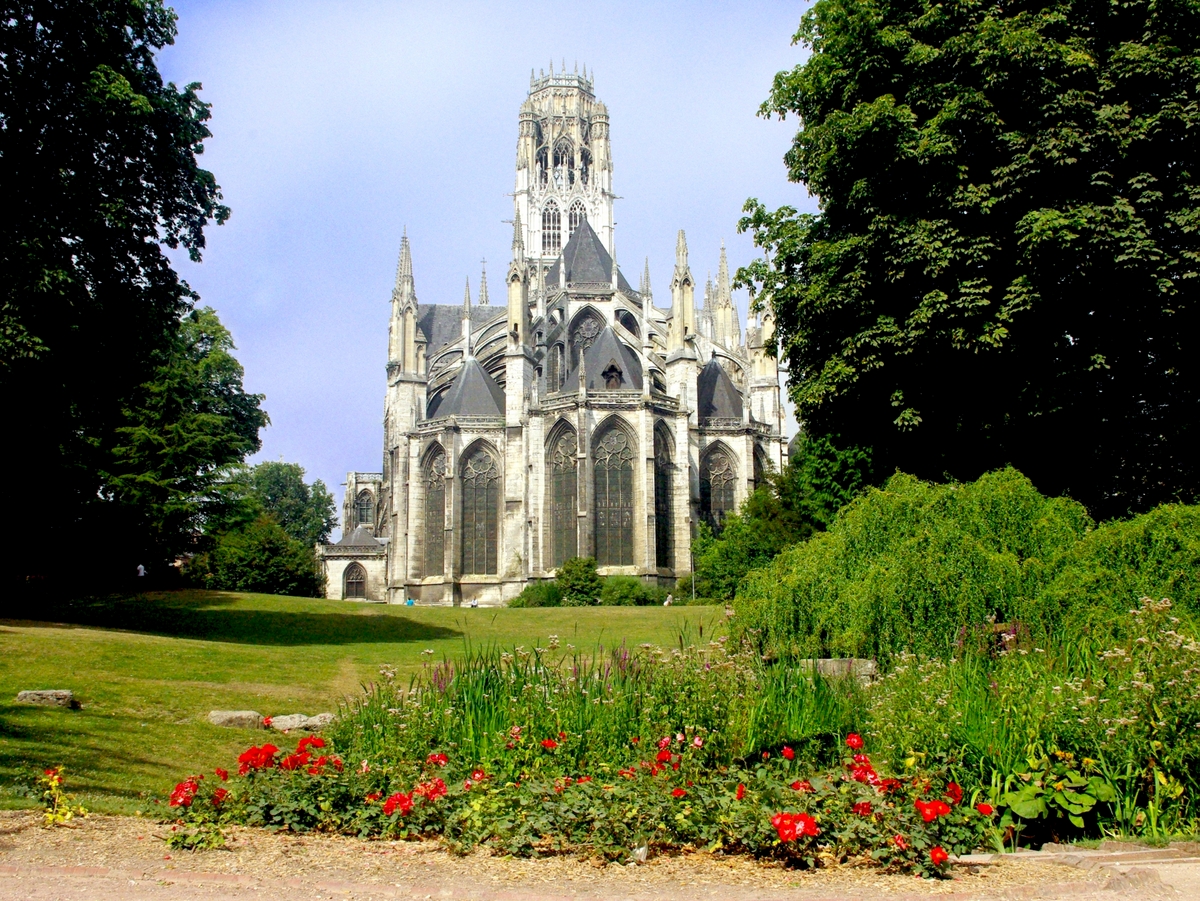
The entrance to the Abbey is through the Marmousets Portal, to the south transept.
Find out more about Saint-Ouen Abbey Church.
St. Joan of Arc Church
Situated on the Place du Vieux-Marché, the 1979 modern and wacky and spiky-looking memorial church is at odds with the surrounding fine brown-and-white half timbered houses. Some people see in the shape of the church an upturned boat or the pyre on which the Saint was burnt. The church is surmounted by a trapezoidal slate roof which is elongated to form a walkway across the square. The scaly tiling of the roof matches the fish-shaped windows.
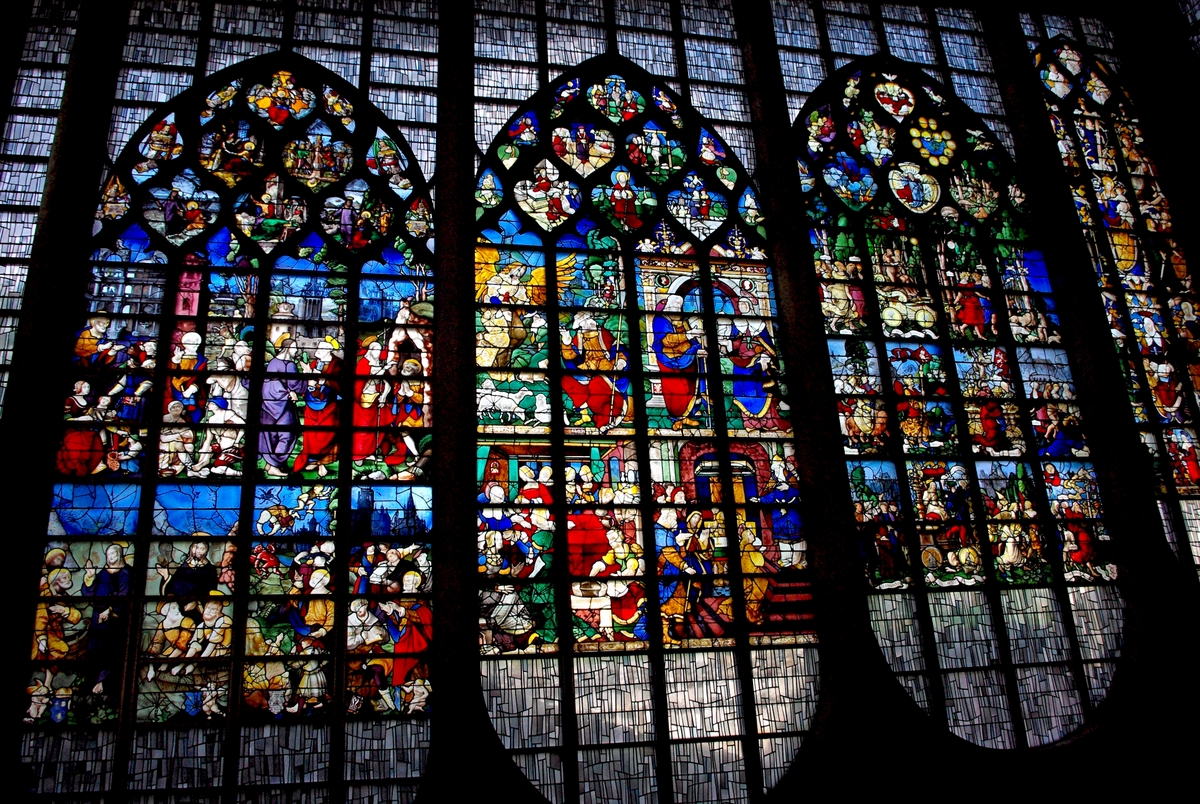
Inside, 13 stained-glass windows from the Renaissance era form a glass wall of 500 square metres, bathing the interior in exceptional light. These fine windows date back to the 16th century and were originally set in another church which was destroyed during the Second World War. However, precautions had been taken and the windows were put in safe keeping until they found their new home some 40 years later. They illustrate Christ’s childhood, Passion, Crucifixion and Resurrection, and life events of Saint Peter, Saint Anne and Saint Anthony of Padua.
Find out more about St. Joan of Arc Church.
Temple St. Éloi
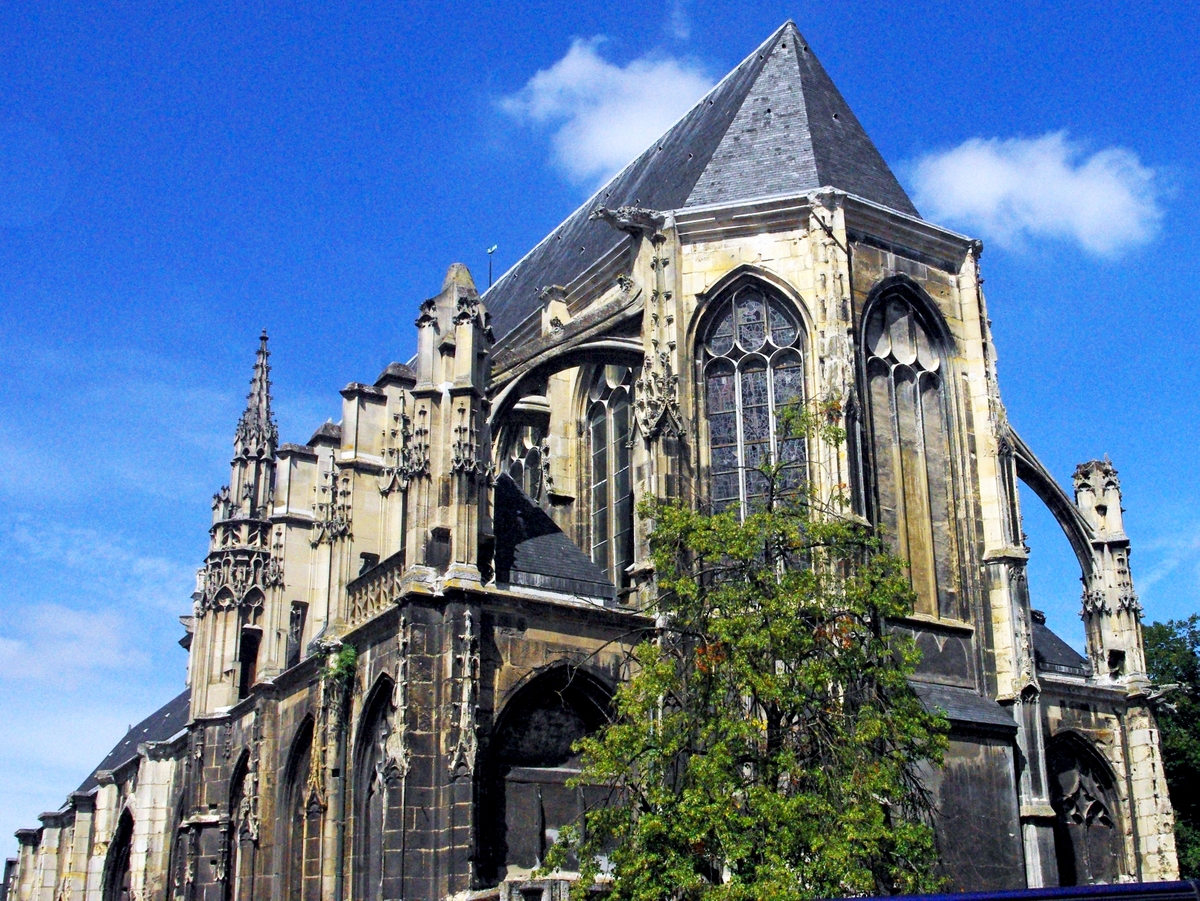
On the Place Martin Luther King, not far from the Place de la Pucelle, stands the 16th century Gothic church of Saint Éloi. The sanctuary was changed into a Protestant place of worship for the Reformed church in 1803.
Former church of Saint-Laurent
The Gothic church devoted to St. Laurent was built from 1440 to 1482 and its bell tower from 1490 to 1501. In 1520 the tower was destroyed and after being rebuilt it was damaged by two storms in 1638 and 1683. Desecrated at the French Revolution, it served as a warehouse and stables. The former church was bought by the City of Rouen who transformed it into a museum in 1911. In 1914 the edifice was listed as an historic monument by the State.
The ironwork museum was founded in 1920 and contains a collection of ironwork donated by Henri Le Secq des Tournelles (1854-1925).
Saint-Godard Church
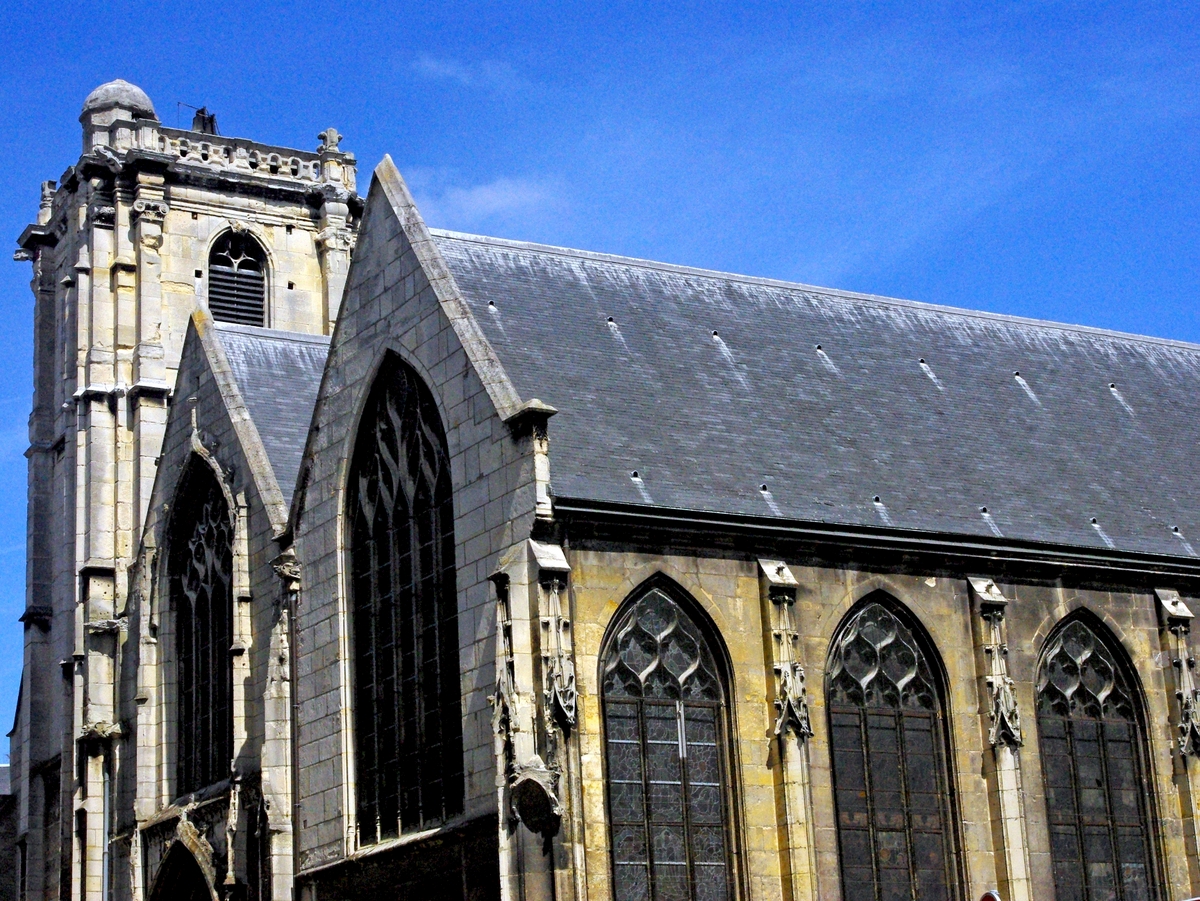
The Saint-Godard church is situated next to the former Saint-Laurent church, today the ironwork museum of Rouen. The present-day church was built on the site of a former sanctuary which burnt down in 1248. Saint-Godard was edified in Flamboyant Gothic style.
The church comprises of three naves of equal height. The church is reputed for its stained-glass windows from the 16th to the 19th centuries. Inside are two organs by Aristide Cavaillé-Coll: the great organ from 1884 and the choir organ from 1885.
Saint-Vivien Church
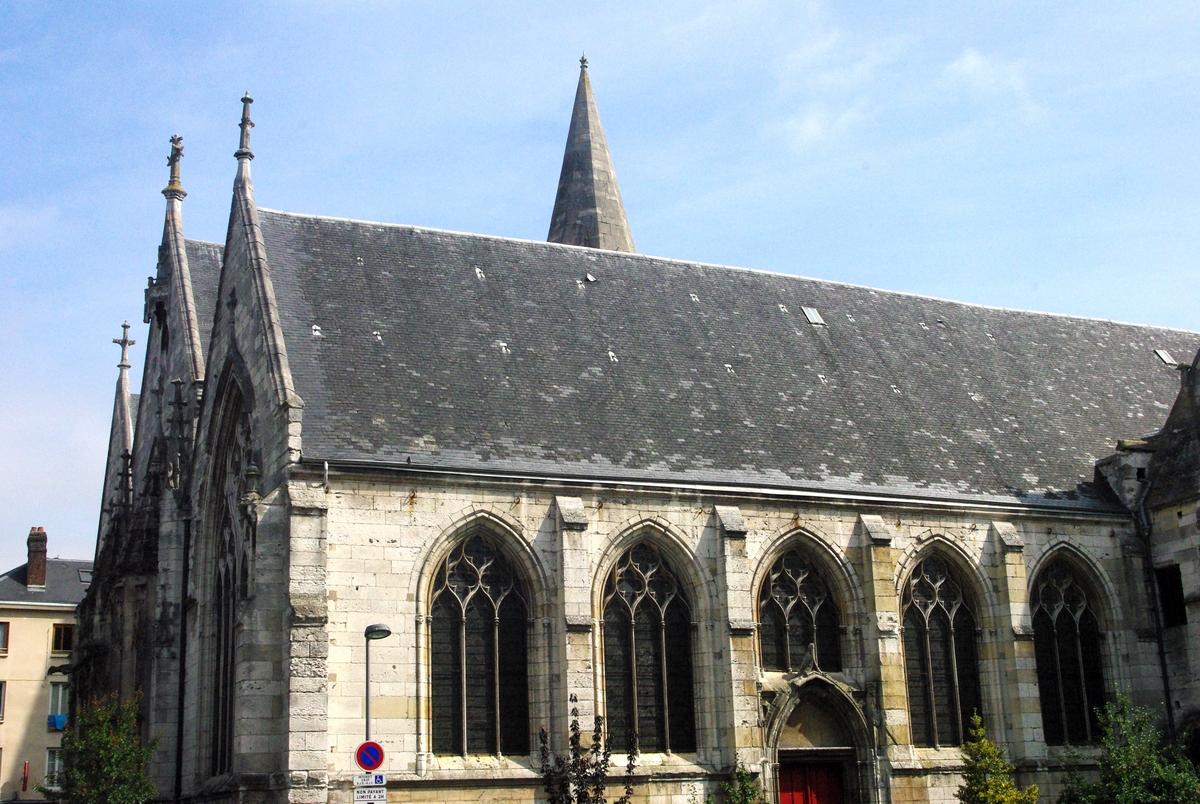
The Saint-Vivien Church is the only church in Normandy to be devoted to St. Vivian (death cc. 460 AD) whose relics were brought to Rouen in 1459. The church is also noted for having three naves. The church was built in 1358 and enlarged in the mid-15th century. On the northern side remains a baby hatch from the Middle Ages where mothers could bring babies and leave them anonymously in the church to be found and cared for.
Saint-Niçaise Church
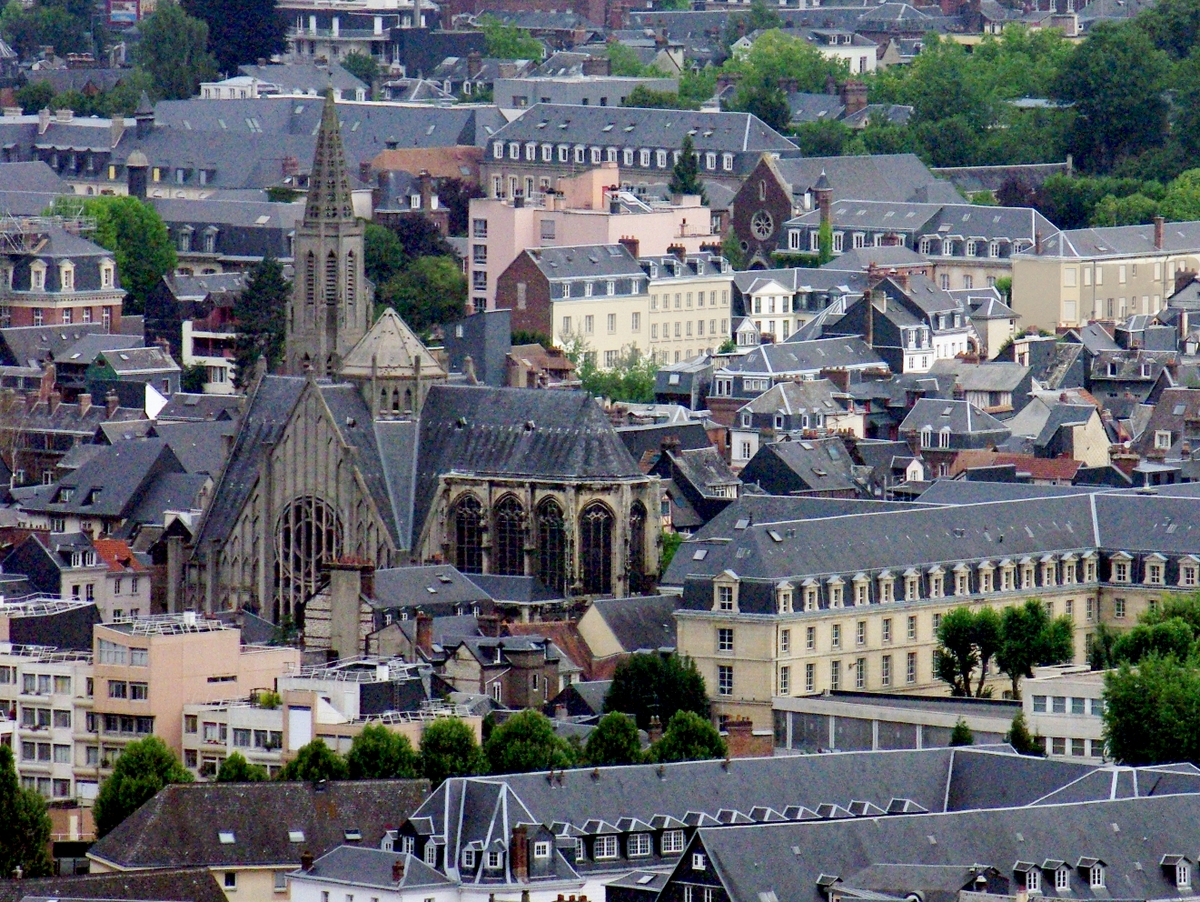
The Saint-Niçaise church is was built from 1538 to 1561 and was greatly damaged by a fire in March 1934. Its nave and bell tower were rebuilt using reinforced concrete from 1934 to 1937 and new stained-glass windows from Max Ingrand installed.
Tour Saint-André and Saint-Pierre-du-Châtel
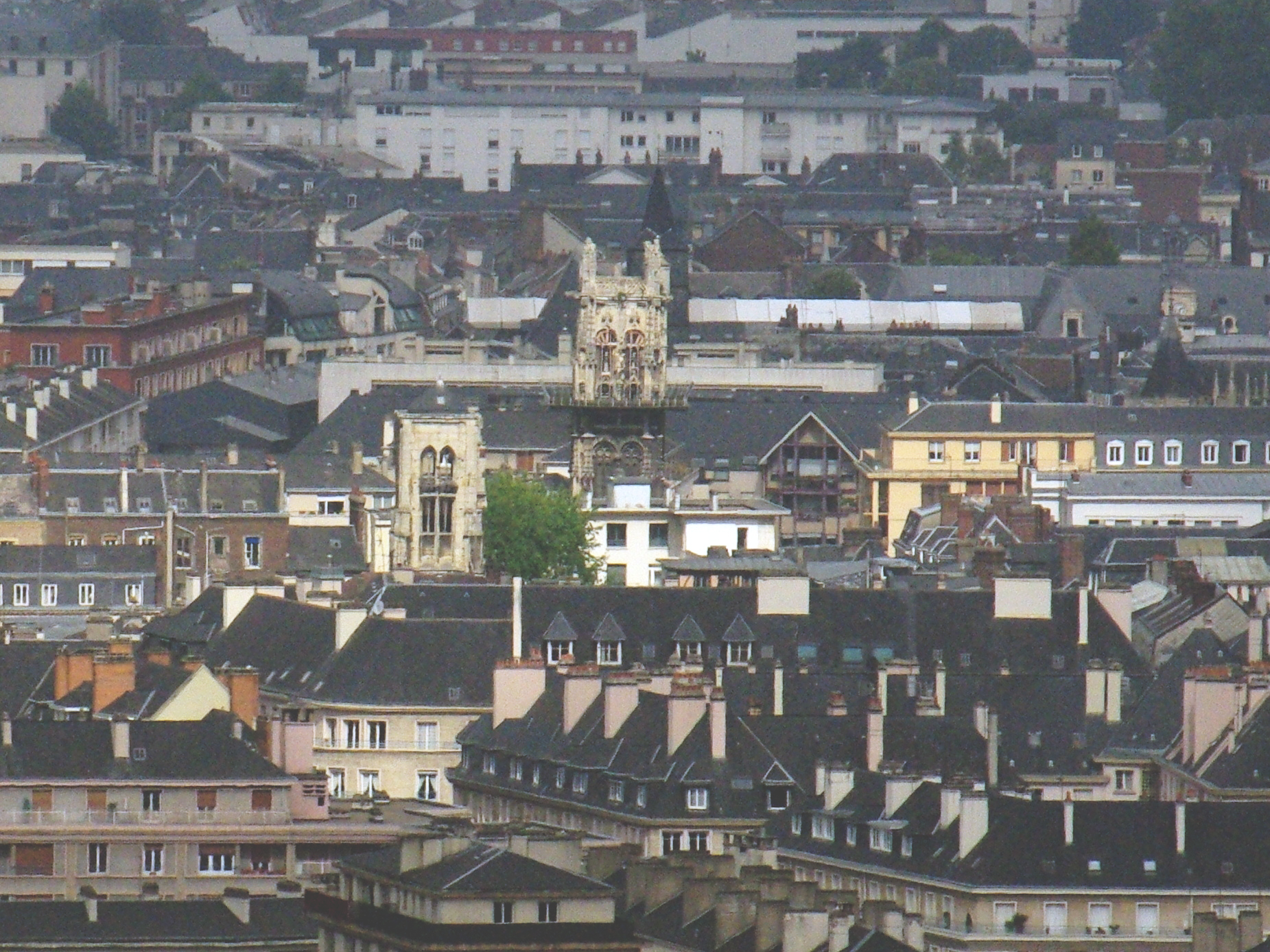
The Tour Saint-André is the only surviving element of the former church of Saint-André built in the 15th and 16th centuries. When the present-day rue Jeanne d’Arc was created in 1861, only the bell tower was left standing.
The Saint-Pierre-du-Châtel church is situated not far from the Tour Saint-André on the rue Camille-Saint-Saens. Rebuilt many times during the Middle-Ages, it was a fine example of Flamboyant Gothic with two naves. It was severely damaged by air bombings during the Second World War and never rebuilt since.
Civil Buildings of Rouen
Rouen may be famous for its Gothic churches and the hundreds of half-timbered houses, but these should not over-shadow other civil buildings such as the Gothic building of the Parliament of Normandy and the Gros-Horloge.
Gros-Horloge
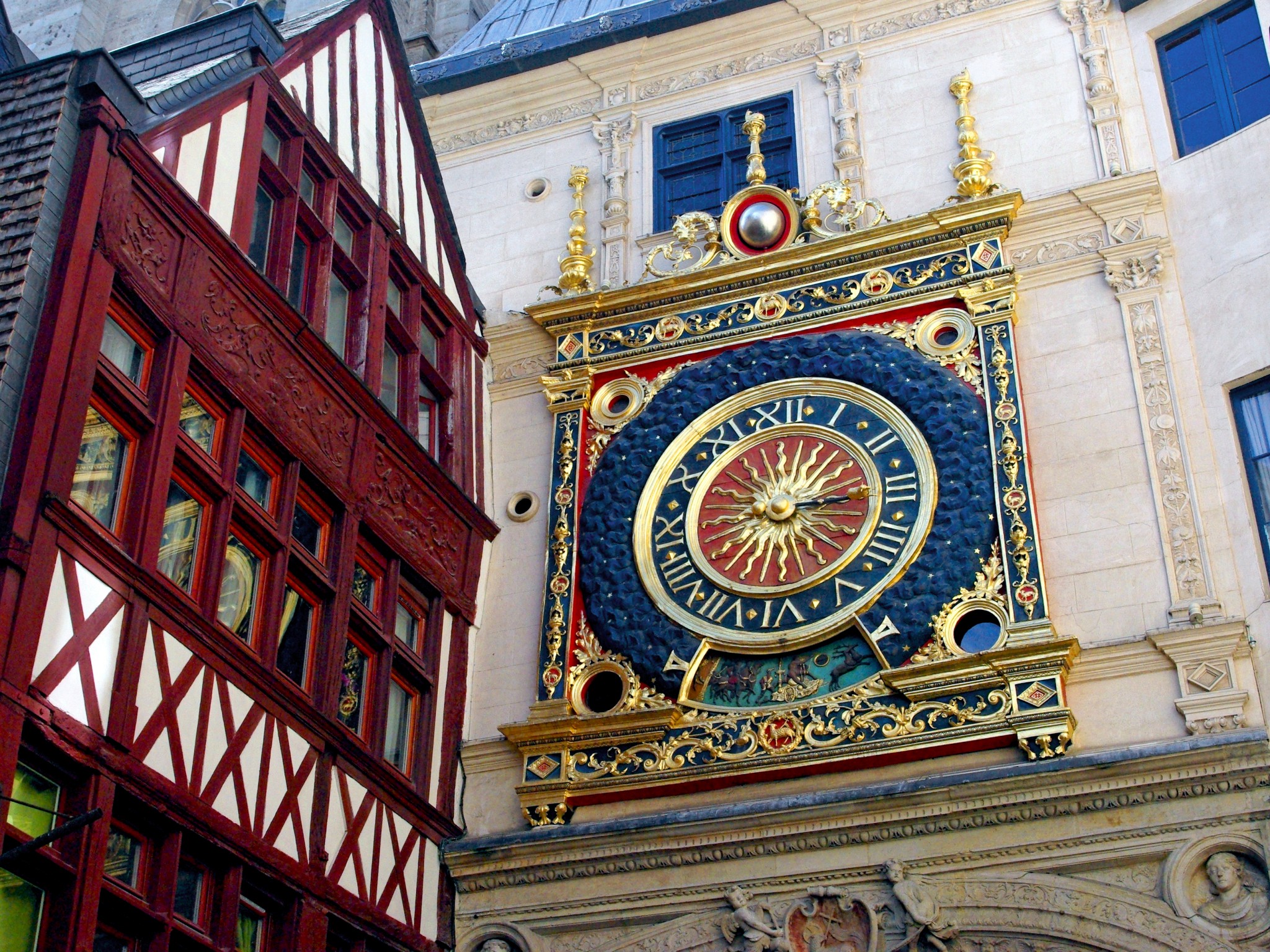
The pride of the Rouennais, the astronomic clock lays on a Renaissance arch which has spanned the street since 1527. The clock lies roughly equidistant between the Place du Vieux Marché and the cathedral. The Gros Horloge itself dates back to the 16th century and its movement from 1389.
The Gros Horloge is flanked by a gothic belfry built between the 14th and the 15th centuries, which houses the bells linked to the clock’s movement.
The two facades of the clock display 24 rays of sun against a blue starred sky.
Find out more about the Gros-Horloge.
Hôtel de Bourgtheroulde
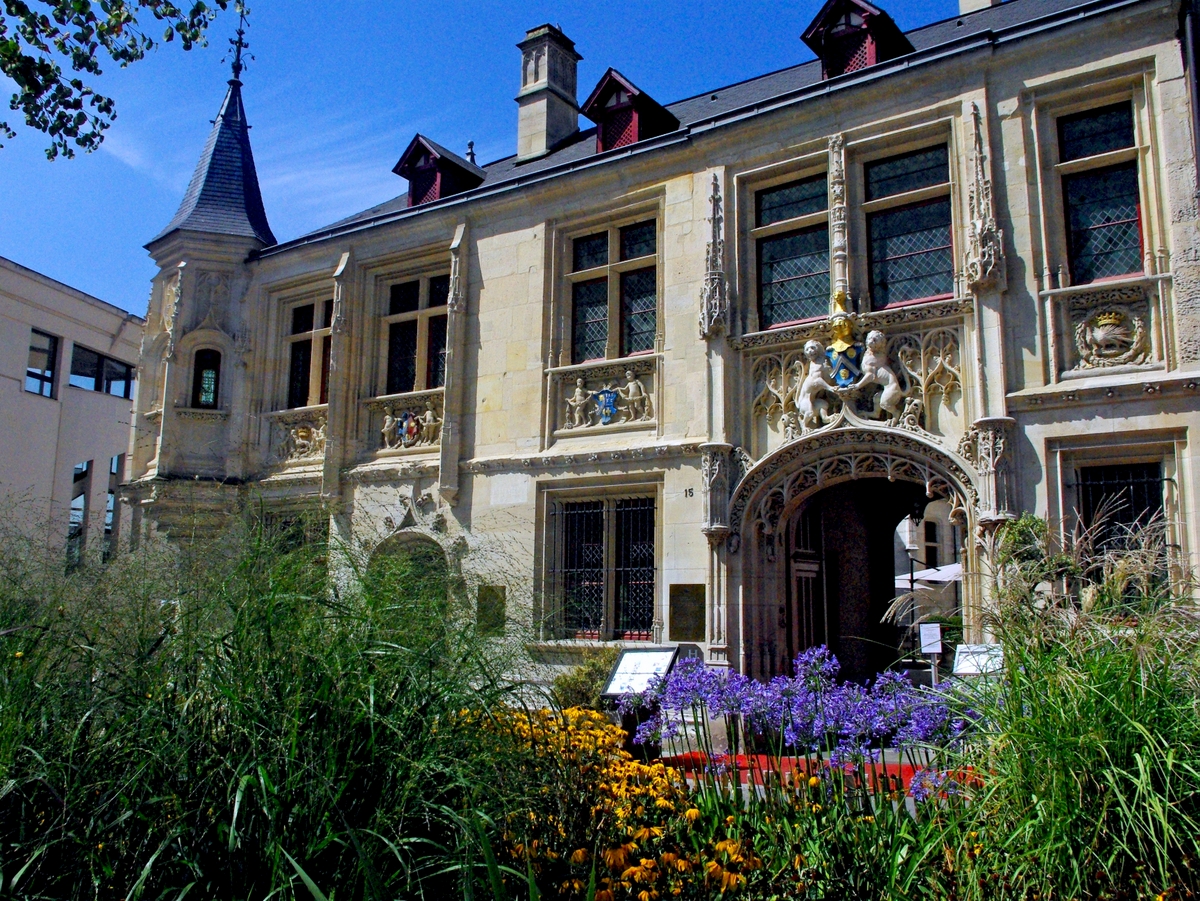
The major attraction on the Place de la Pucelle is no doubt the fine Gothic Bourgtheroulde Mansion, designed to serve as a residence to Guillaume II le Roux, Lord Bourgetheroude and member of the Exchequer of Normandy. The 16th century mansion was built in order to reflect the Lord’s respectable rank. Although dominantly Gothic, there are some Renaissance influences visible from the courtyard.
Find out more about the Bourgtherould House.
The House of the Exchequer (Bureau des Finances)
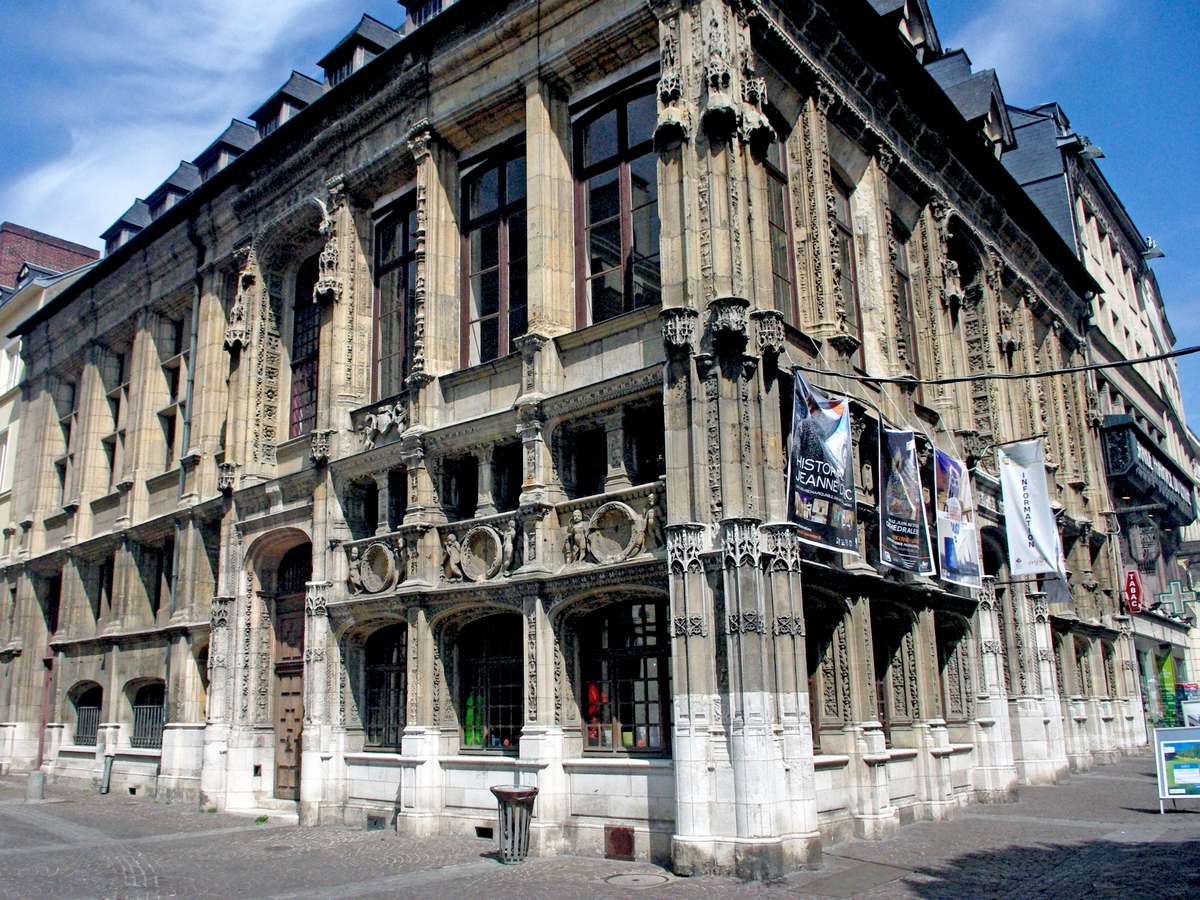
The House of the Exchequer (Bureau des Finances) houses the Tourist Office of Rouen and faces the western façade of the Cathedral. Built between 1509 and 1540, the Gothic house also features early Renaissance elements, which makes it Rouen’s oldest Renaissance building.

The architect Roulland le Roux was commissioned in 1509 by Thomas Boyer, Exchequer General of Normandy to build him a fine mansion. Le Roux also worked on the Cathedral’s main porch, a fine example of Flamboyant Gothic style. It took le Roux 30 years to complete the house.
It is interesting to note a certain Renaissance influence in the horizontal and vertical line design and in the singular arabesque and grotesque decoration, proving that the new architectural style was emerging in Rouen. The House of the Exchequer is Rouen’s oldest Renaissance building.
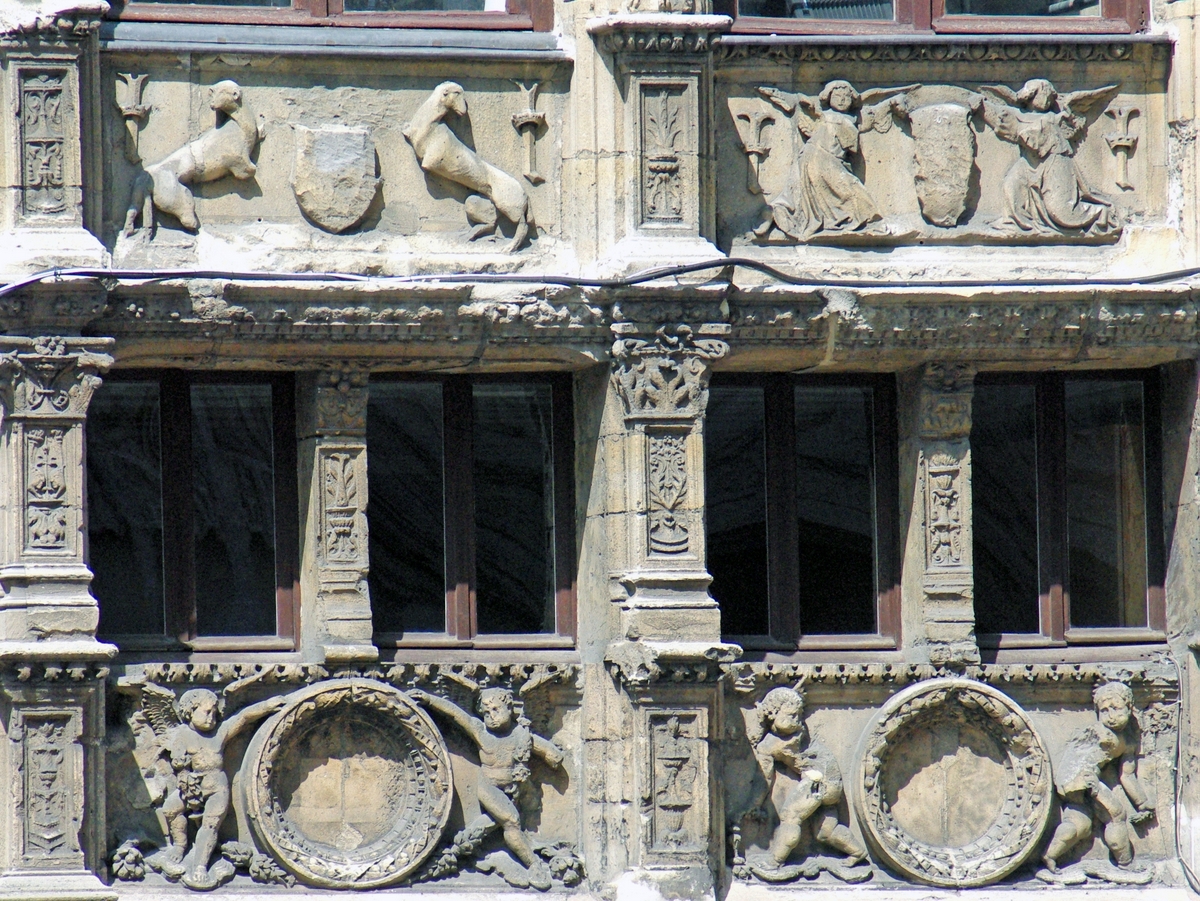
There is an inner courtyard bordered by half-timbered façades accessible through the Tourist Information Centre.
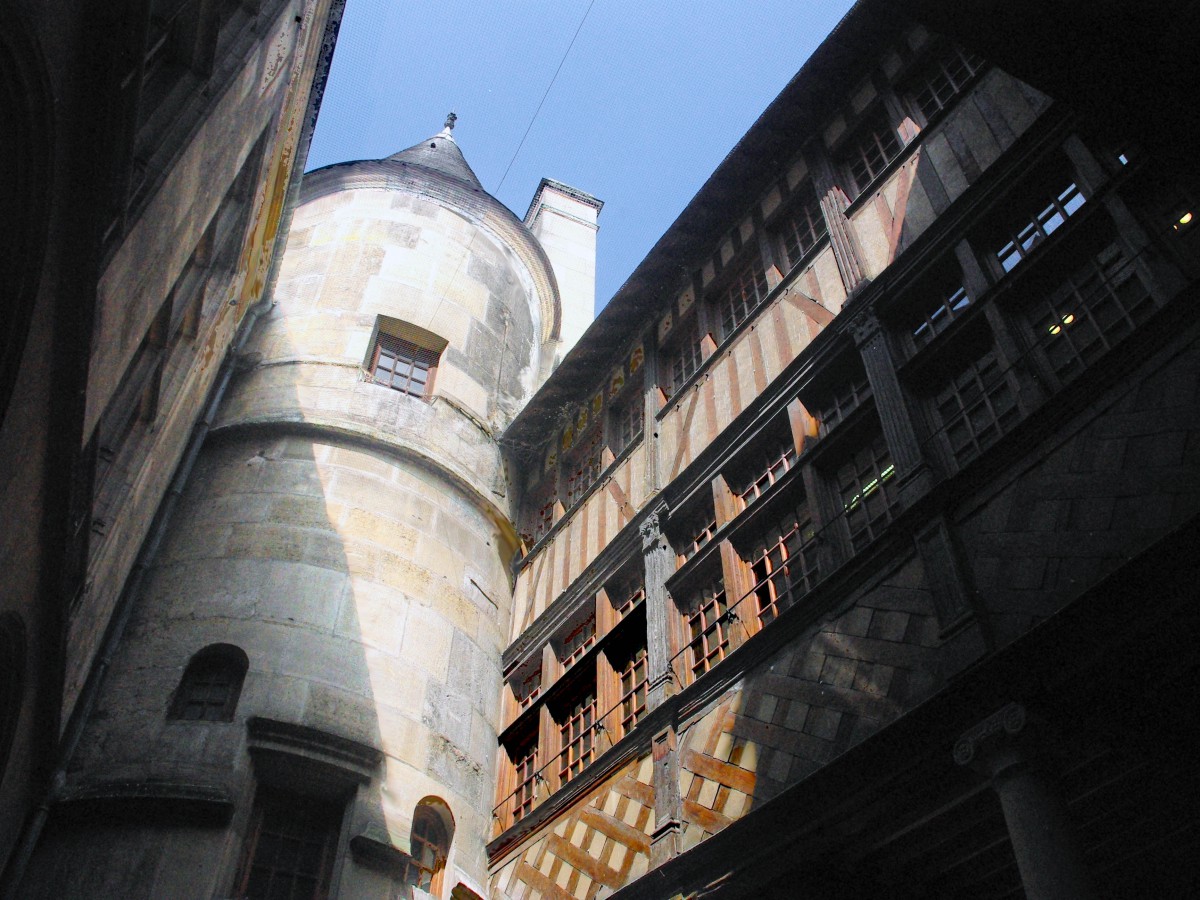
It was from the first floor of the house that Claude Monet painted 11 paintings of the western façade of Rouen Cathedral in the 1890s. Some of them are on display inside Rouen’s Fine Arts Museum and Musée d’Orsay in Paris.
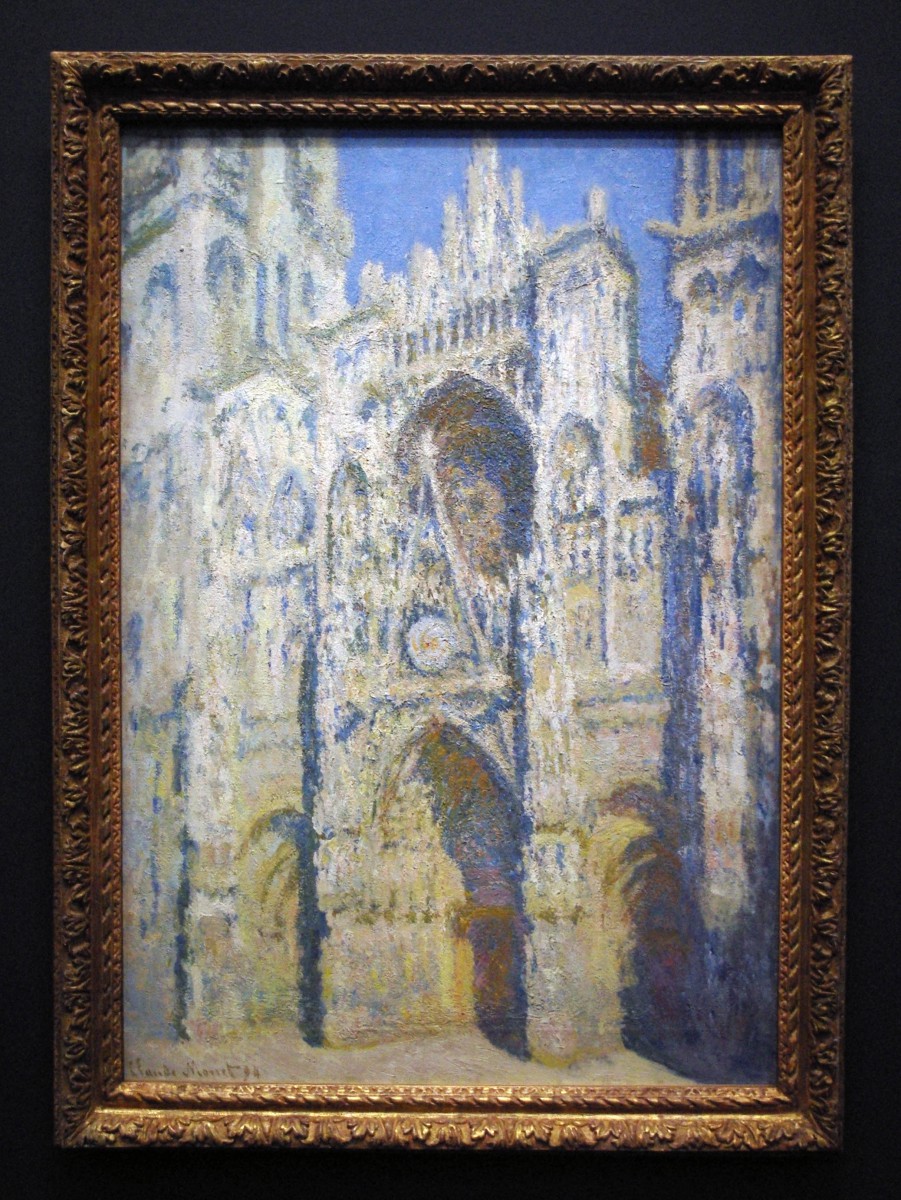
Since 1957 it has housed the Tourist Information Centre in this perfect location opposite the cathedral.
Parliament of Normandy (Parlement de Normandie)
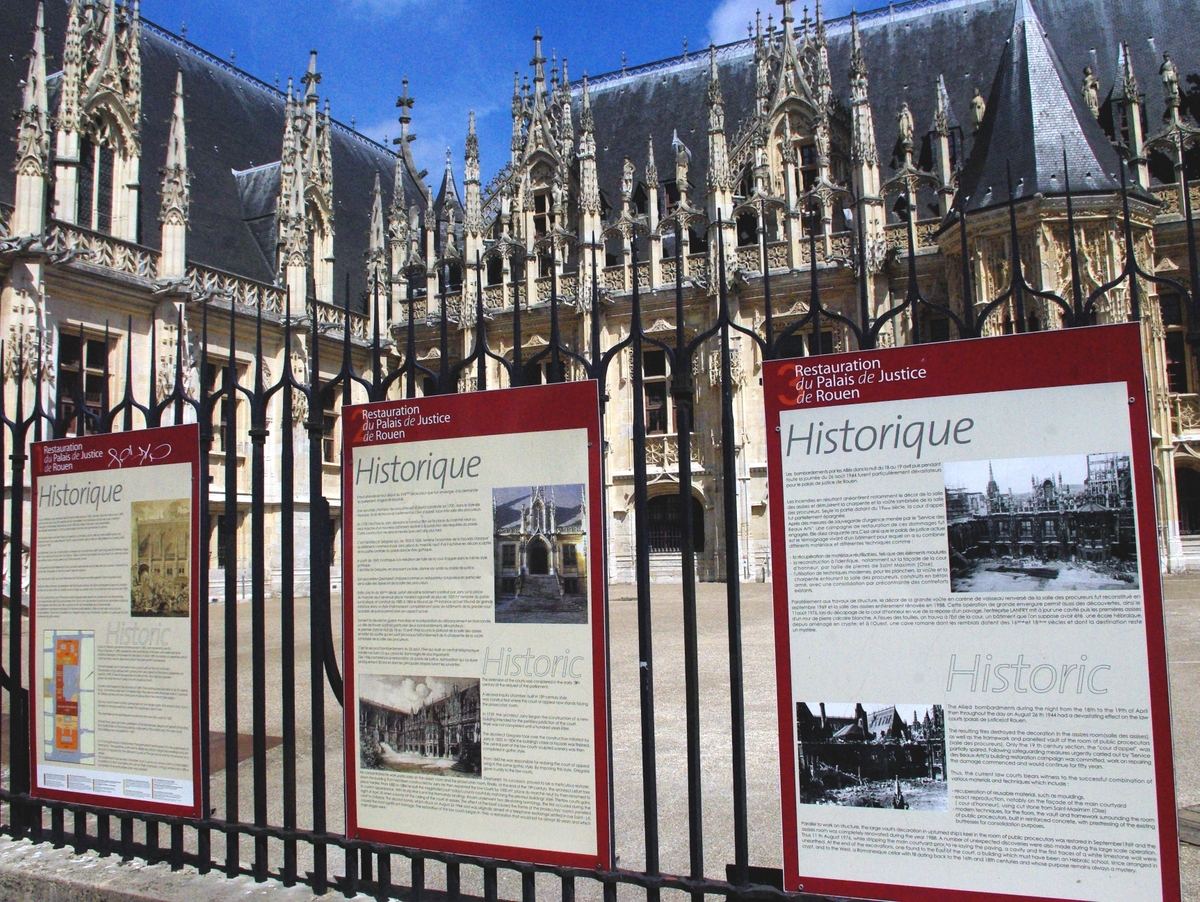
The vast complex of the Palais de Justice is one of the rare civil constructions in Gothic style in the late Middle Ages in France.
The Gothic site once housed the seat of the Parliament of Normandy. The word “parliament” may be misleading as there were no MEPs debating there; instead it was the High Court of Normandy.
The building used to house the Exchequer of Normandy which became the Parliament of Normandy and the Burghers’ Assembly under King François I in the 16th century. The two jurisdictions represented the high judicial and the small court.
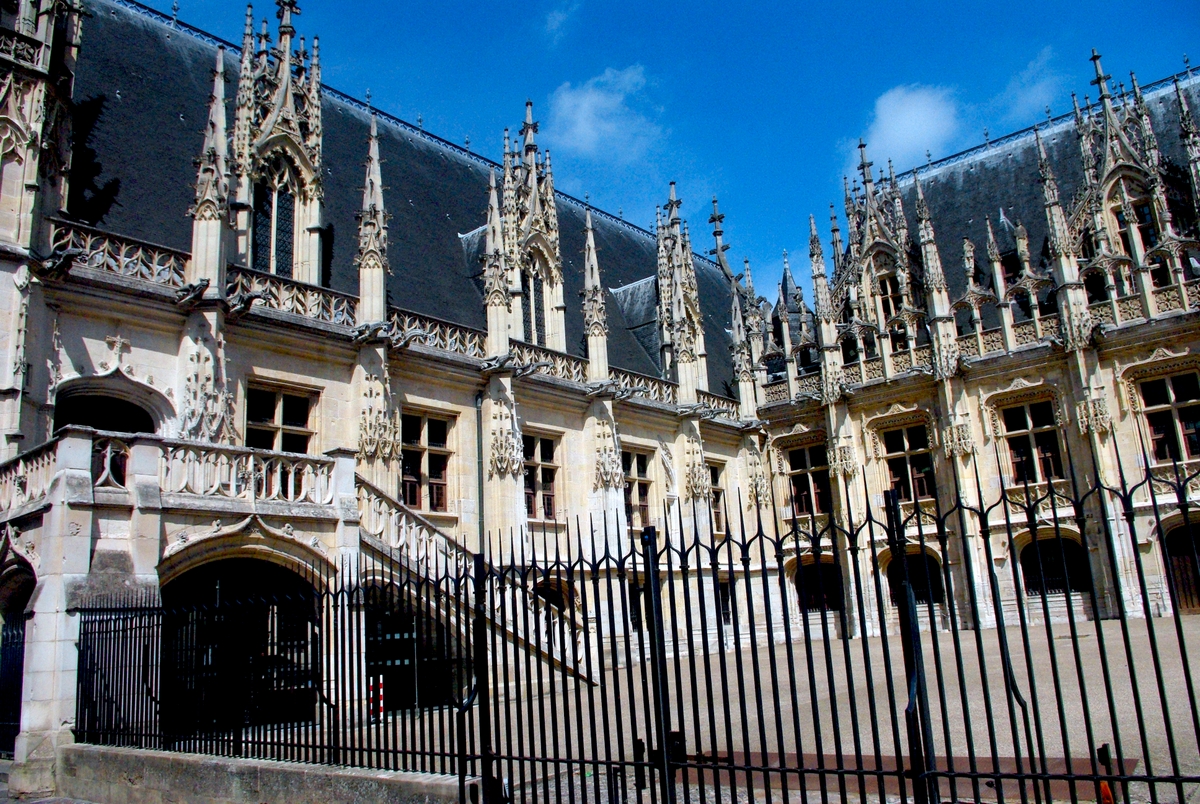
Only the west wing on the left of the facade is truly Gothic. This oldest part of the building, erected from 1499 is called New Market Hall (Palais du Neuf Marché). A closer look at the decoration will reveal Gothic features: crocheted pinnacles, gargoyles, four centred arches, statues and a Flamboyant balustrade with interlaced rosettes at the base of the roof.
The central part of the building, edified during the 16th century, is a mix of Gothic and Renaissance styles. The decorations are more refined than the west wing and the balustrade radically different.
The right wing is a neo-Gothic pastiche from the 19th century which replaced a Classical style facade. Again, the facade on the rue Jeanne d’Arc, although elegant, only dates back to the 19th century, as is the clock tower. This part was built in order to reflect the Gothic west wing visible from the courtyard on the street.
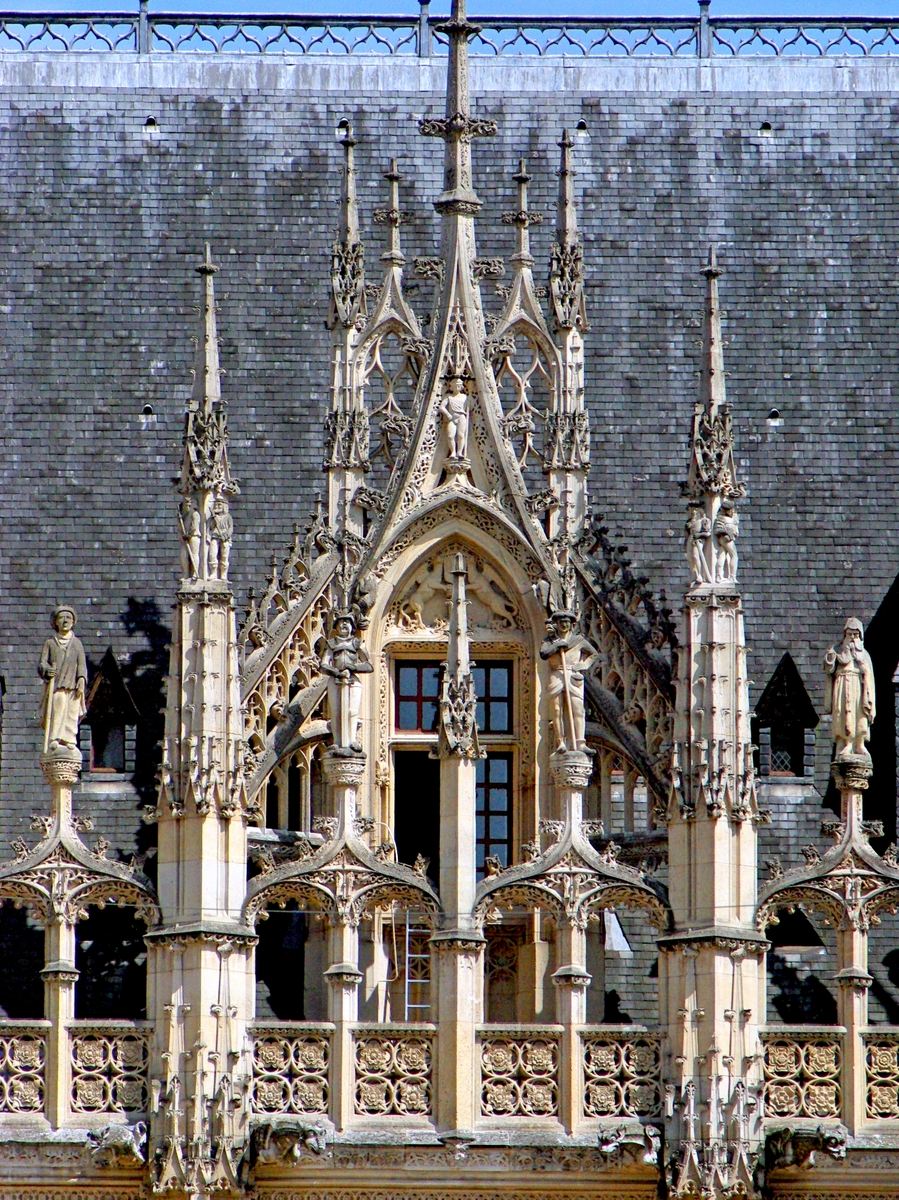
Inside the Parliament House
Inside, the staircase of the west wing which leads to the Public Prosecutors’ Chamber does not date back to the 15th or 16th centuries; it was added at the beginning of the 20th century and was built in a neo-Gothic Champenois style. It leads to the majestic Salle des Procureurs, or Public Prosecutors’ Chamber, where lawyers would gather.
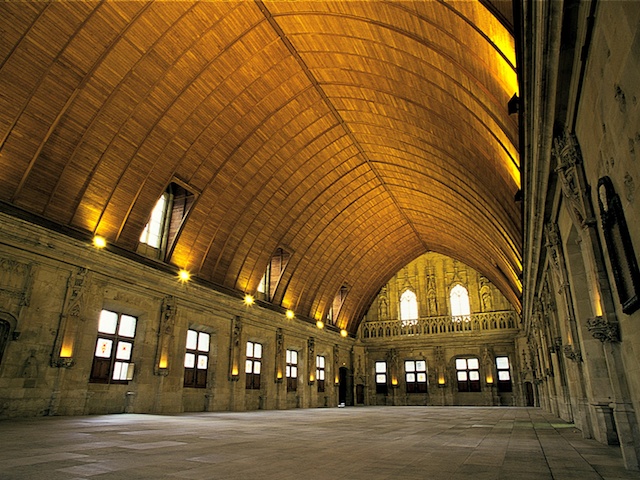
The splendid panelled ceiling or the chamber is 16.5 metres wide. Towards the end of the vast chamber stands the table at which Pierre Corneille argued his cases when he was a lawyer. The writer was born in Rouen and lived in the city at 4 Rue de la Pie for 56 years.
The whole building was seriously hit twice in 1944 by the Allied bombs and the roof and the pinnacles were destroyed. Only the walls made in stone were left standing. An extensive restoration of the whole building was successfully undertaken to return it to its former glory.
City-Hall of Rouen (Hôtel de Ville de Rouen)
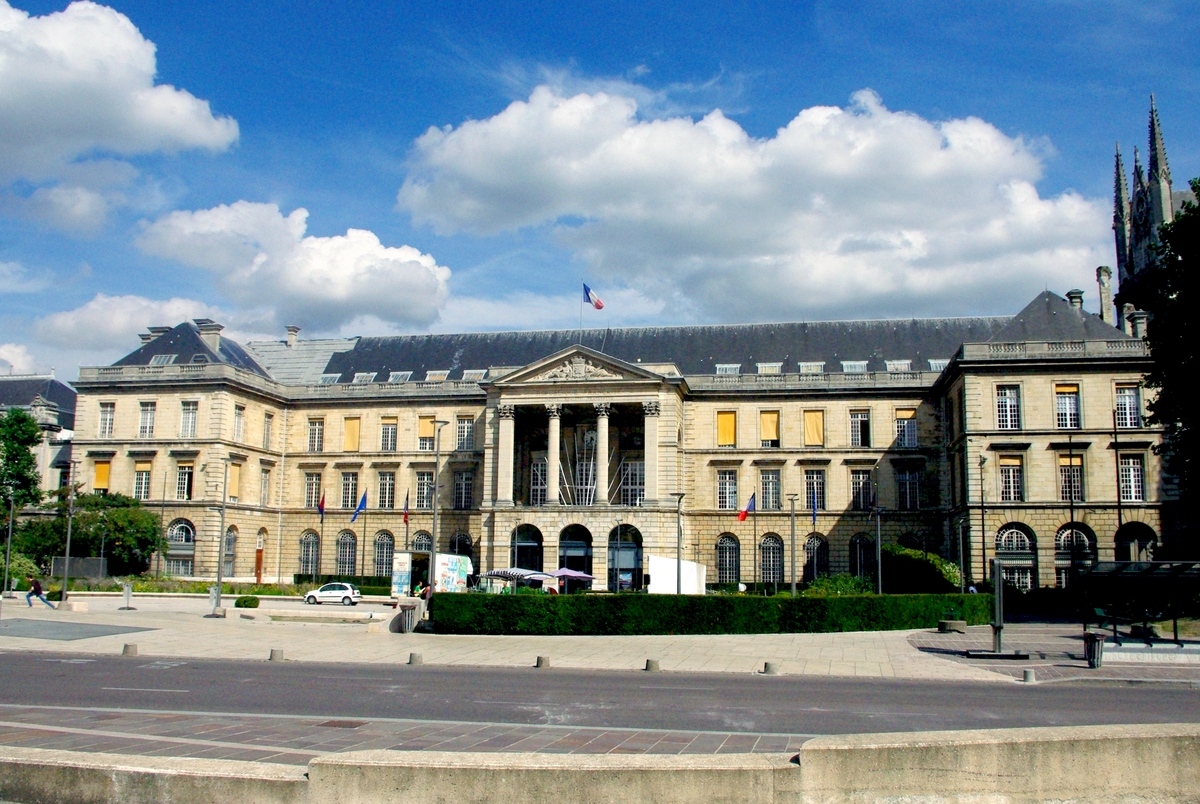
The classical building which stands close to the abbey church of Saint-Ouen is Rouen’s present day City-Hall. It used to be the monk’s dormitory until the French Revolution. The monks had only just completed the building when they were forced to abandon it to the municipality.
Sometimes, the Town Hall lobby is open and from there you can access the great staircase and have a peek at the statues of Joan of Arc and Pierre Corneille. The rear of the City-Hall building can be seen from the Jardins de l’Hôtel de Ville.
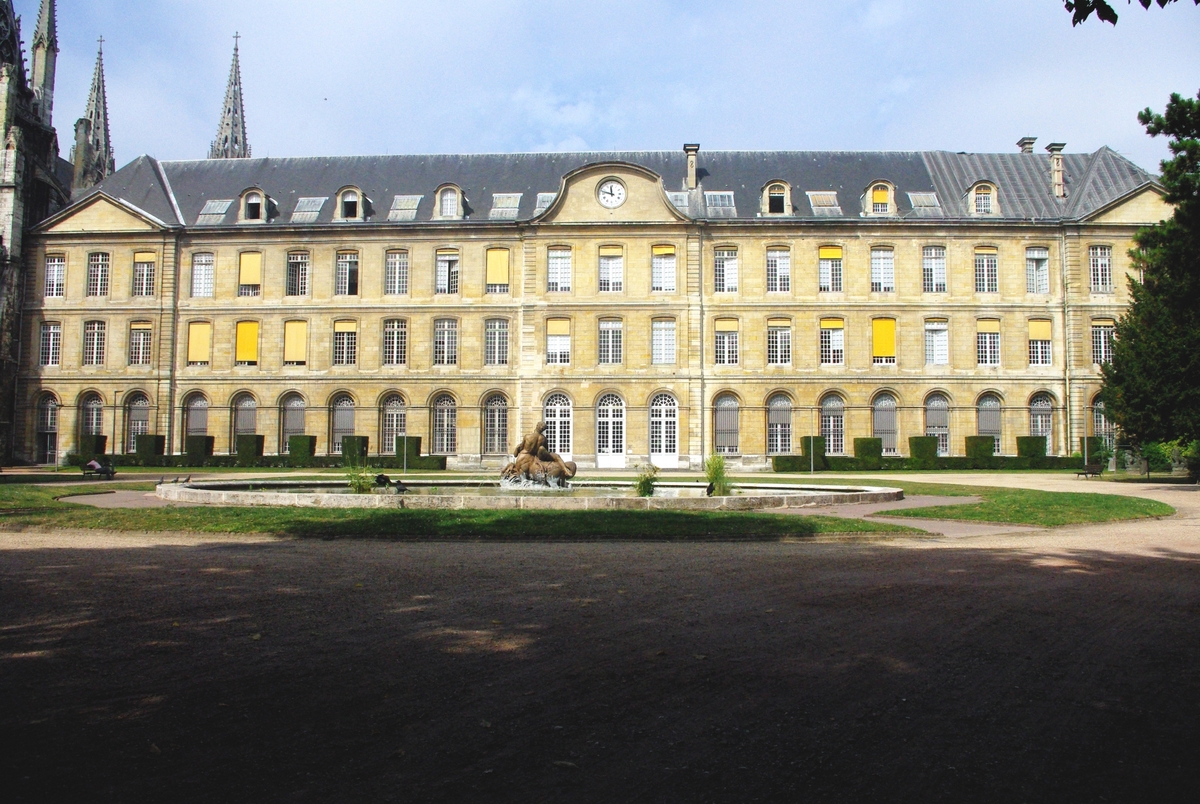
Ossuary of Saint-Maclou (Aître Saint-Maclou)
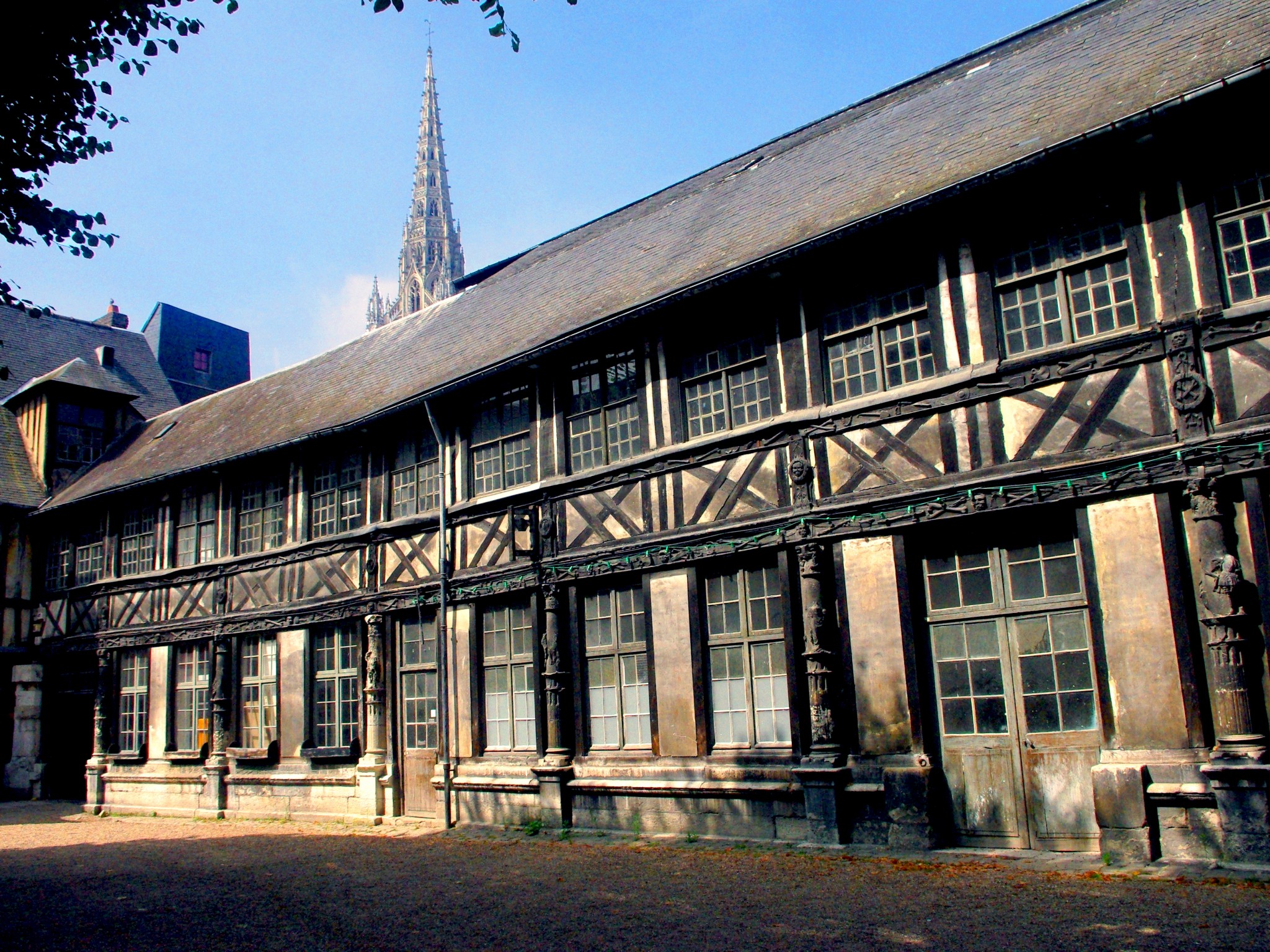
One of the landmarks of Rouen, the unique ossuary Saint Maclou (in French: Aître de St Maclou) is a popular yet strange tourist site. To place the ossuary in context, one must recall the Great Plague of 1348 when the parish of Saint-Maclou lost three-fourths of its population.
Find out more about the Aître Saint-Maclou.
Tower of Joan of Arc
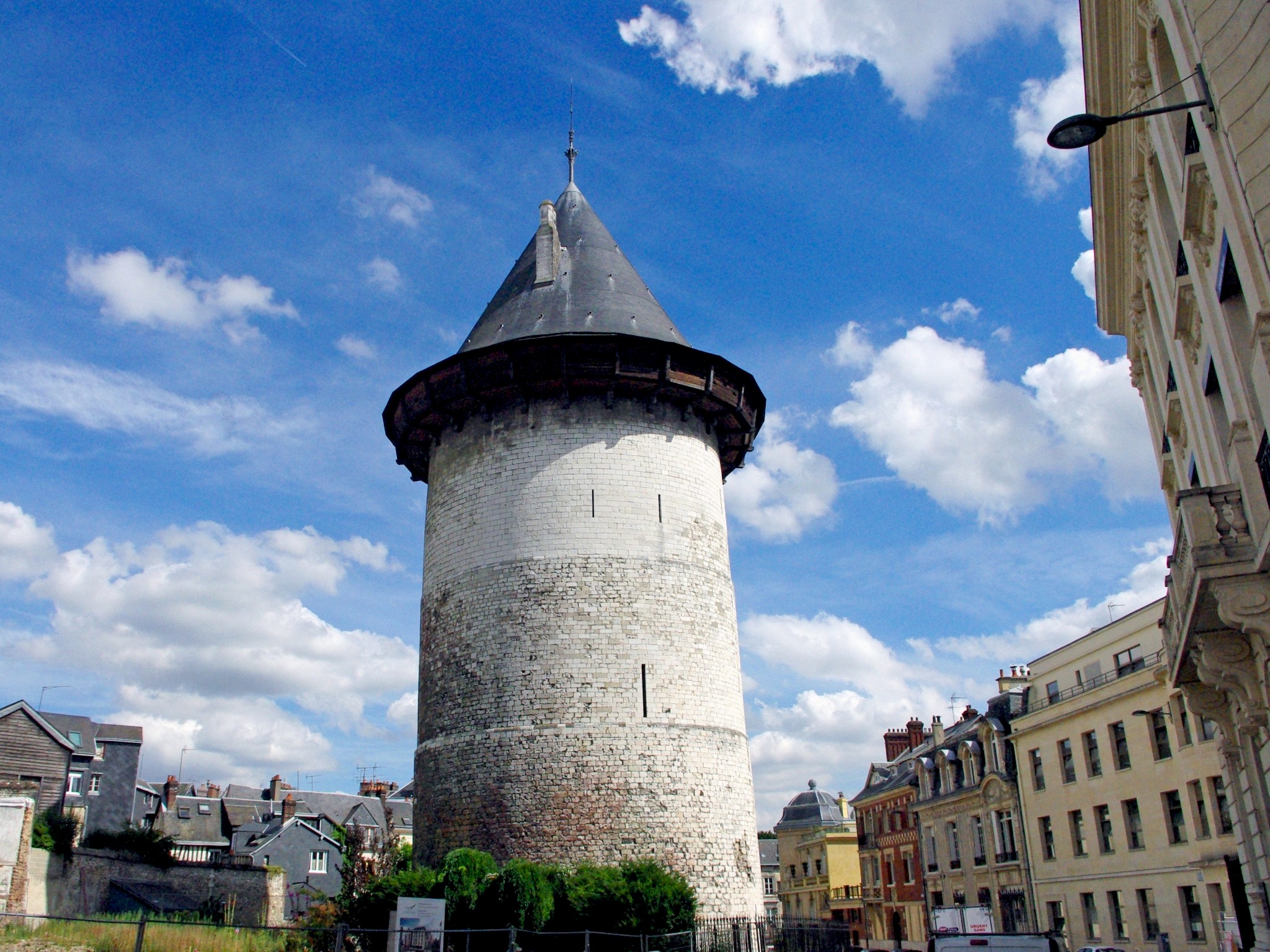
The tower (known in French as ‘Tour Jeanne d’Arc‘) is the only part that remains of the Castle of Rouen built by Philip Augustus.
Joan of Arc was brought inside the castle when she was taken prisoner on the 24th May 1430 and brought to face trial.
During the Second World War, the tower was turned into a bunker by the Germans.
Find out more about the Joan of Arc Tower.
Fine Arts Museum of Rouen
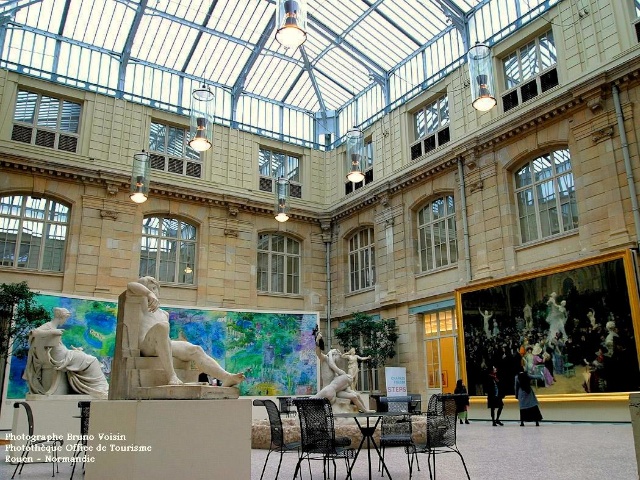
The renowned museum was established by Napoleon I but the present building dates back to the end of the 19th century and was entirely restored in 1994. It is surrounded by a peaceful garden, the Square Verdrel.
The edifice houses an extensive and varied collection of painting, sculpture, drawing and decorative art collections in 63 rooms dedicated to permanent exhibitions. Regular temporary exhibitions are often held and may be at an extra charge.
The pride of the museum is its painting collection as every European schools is represented, from the 15th to the 21st centuries, including artists such as Perugino, Rubens, Nicolas Poussin, Eustache Le Sueur, Fragonard, Géricault, Delacroix, Corot, Sisley, Renoir, Pissaro, Degas, Monet and Modigliani. As for the impressionism collection, outside Paris, it is one of the richest in France.
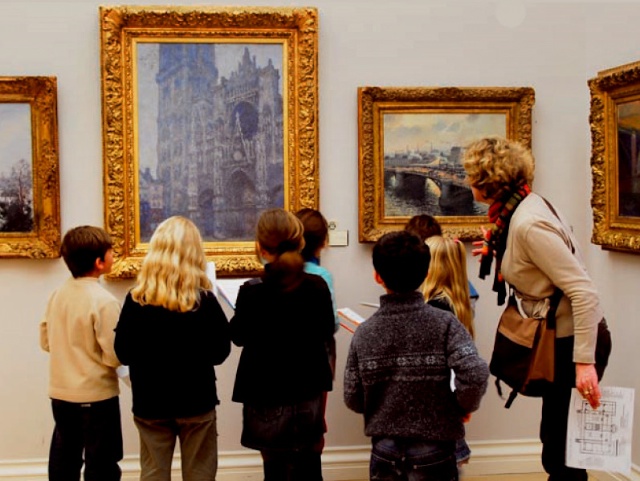
On display are the paintings depicting views of Rouen: La Cathédrale de Rouen (Monet, 1894), Vue Générale de Rouen (Monet, 1892), and Vue des bords de la Seine à Rouen (William Callow, 1855).
Find out more about Rouen Fine Arts Museum.
Streets and Squares of Rouen
The streets and squares of the old town of Rouen are often bordered with half-timbered houses and churches. Here are a selection of the most interesting thoroughfares.
Place du Vieux-Marché

Place du Vieux Marché is arguably the main square of Rouen with its half-timbered houses and restaurant and dominated by the modern church of Saint Joan of Arc.
A small commemorative plaque and a 20 metre high cross mark the spot on which Joan of Arc was burnt alive on the 30th May 1431. On the adjacent walls, the marks of a former church destroyed in the past are visible.
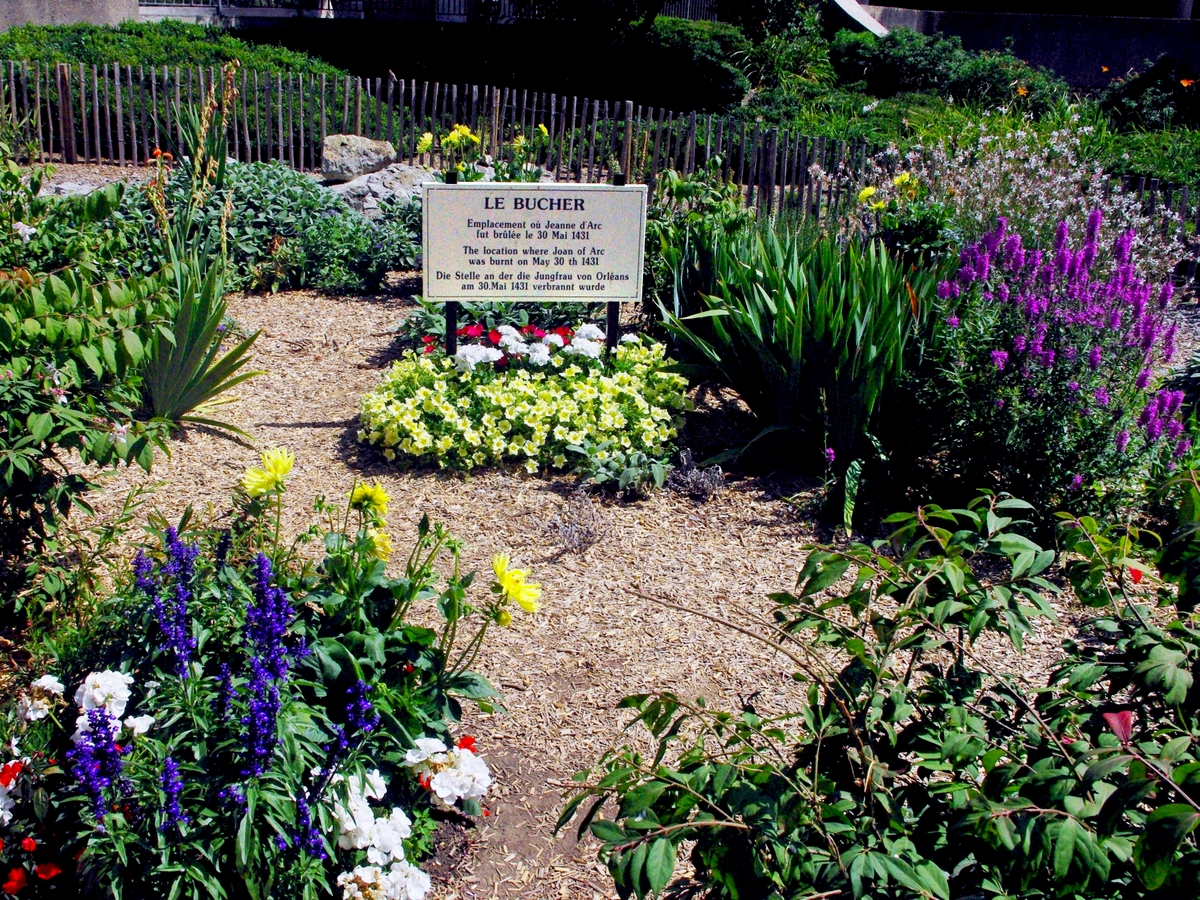
Next to the church stands a small market hall, evoking the ancient tradition of trade occurring in the square as long ago as Joan of Arc’s time.
Place de la Pucelle
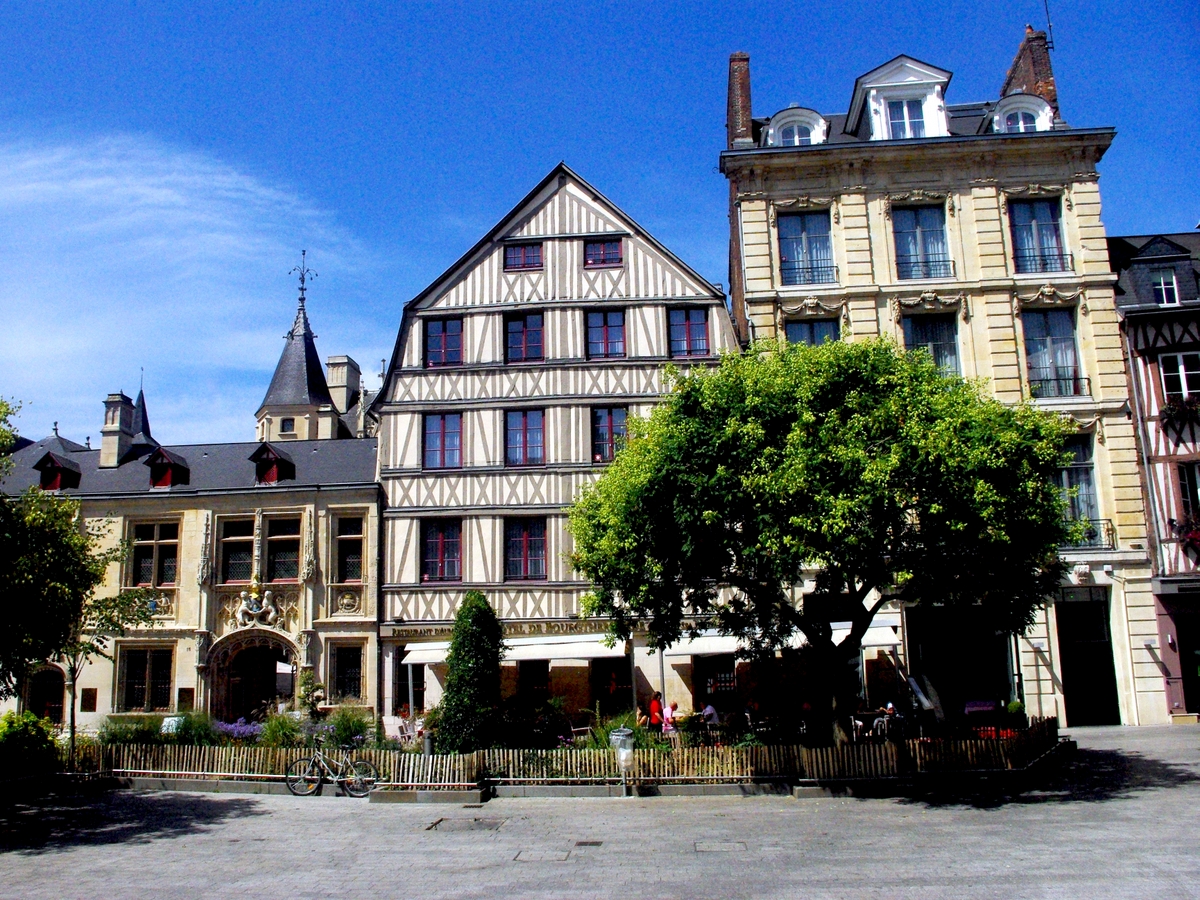
The name of the square led many to erroneously believe this was the place where Joan of Arc had been burnt at the stake. This explains why a fountain (now gone) was standing there in her honour. The square bordered by restaurants is also famous for the magnificent Hôtel de Bourgtheroulde.
Rue du Gros-Horloge
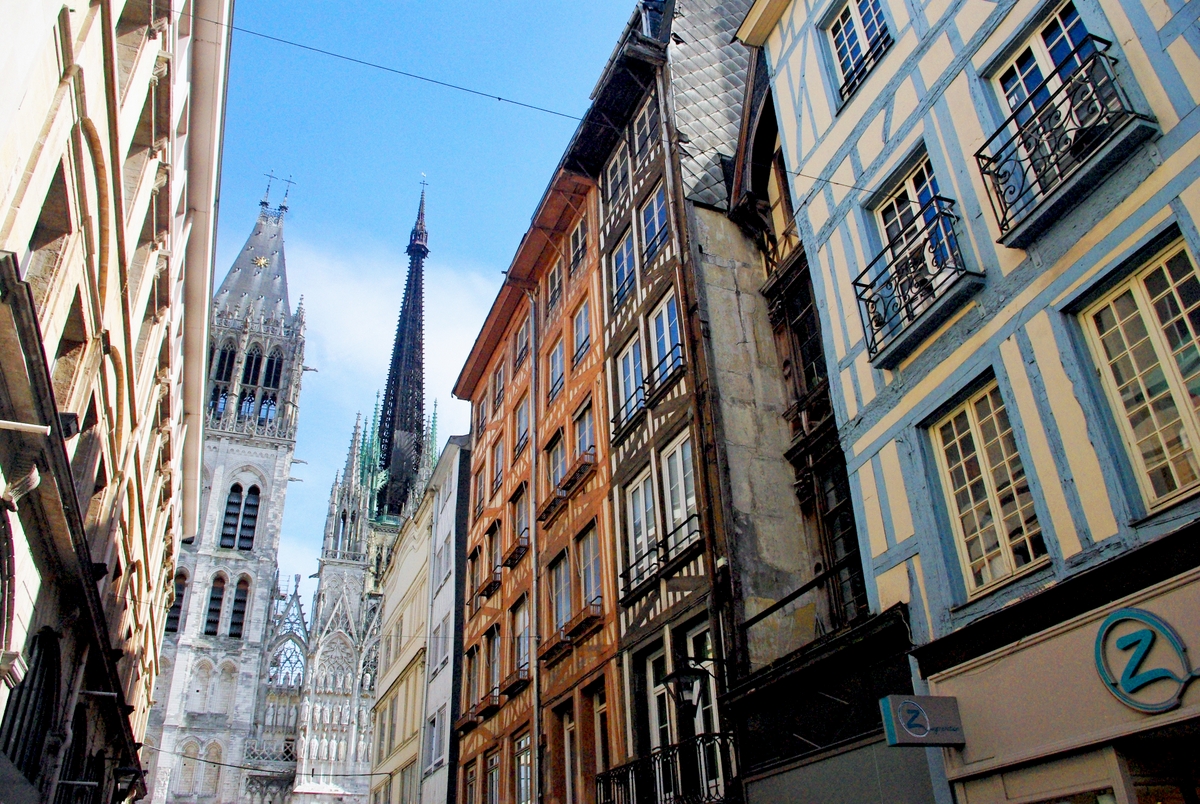
Sometimes called by locals “Rue du Gros”, this 420 metre long street is famously known for the astronomical clock (the “Gros Horloge”).
The picturesque cobbled street is bordered with charming half-timbered buildings built on waterproof stone bases, some of them with richly decorated corbellings made of oak. A few of the houses along the Rue du Gros Horloge are thought to have been built before the time of Joan of Arc’s death at the stake in 1431.
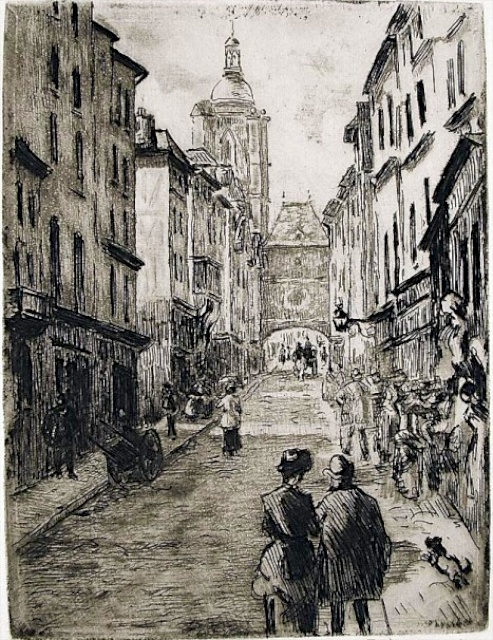
The Rue du Gros Horloge was painted by Camille Pissarro in 1885 which became the first pedestrian street in France in 1971. Apart from its historic atmosphere, it owes its popularity to the numerous shops and department stores.
Rue Saint-Romain
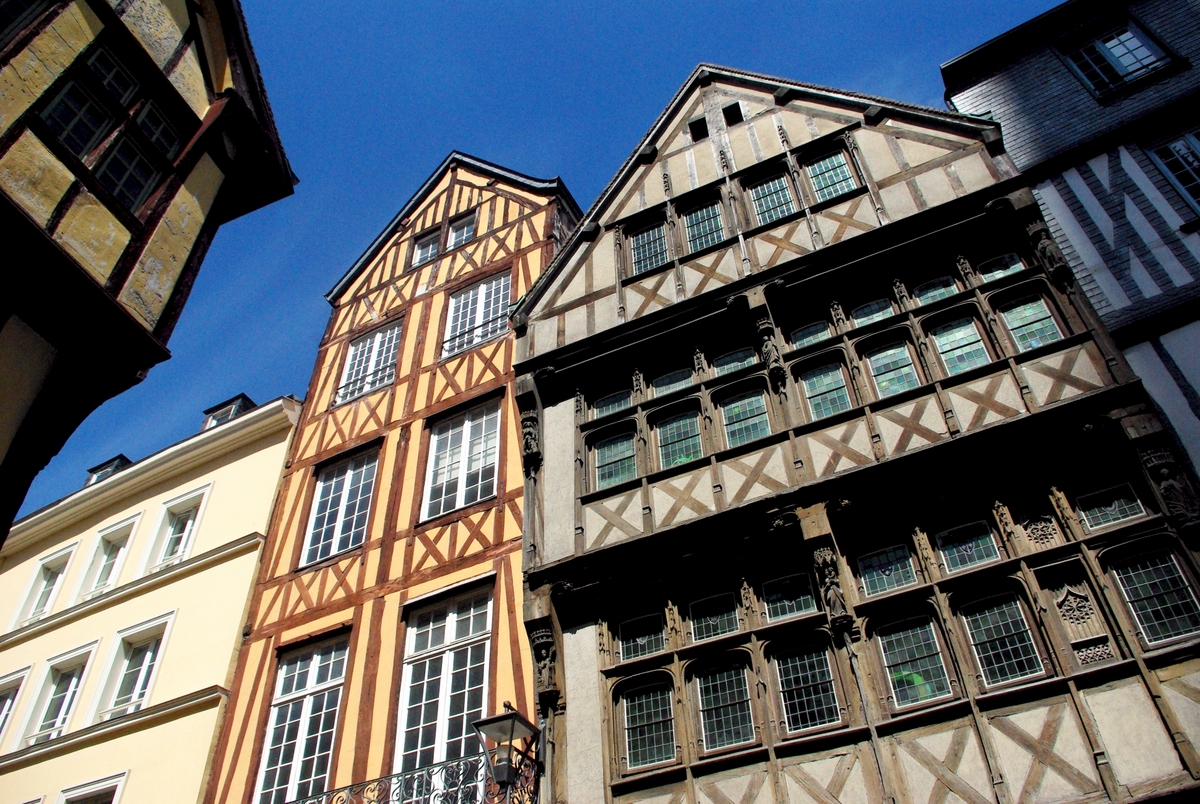
The street bears the name of the archbishop of Rouen, Saint Romain (7th century). It borders the north side of the cathedral and the archbishopric. Rue Saint Romain is a picturesque street bordered by fine half-timbered houses from the 15th to the 18th centuries that has often been painted, particularly by Camille Pissarro, Eugène Boudin and Charles Pinet.
The street gives access to the North Portal of the cathedral, known as ‘Portail des Libraires’.
The medieval looking complex of the archbishopric of Rouen adds to the medieval character of the street.
A gable with a window frame is all that remains of a former chapel where the trial of Joan of Arc ended on the 29th May 1429. It is there as well that her rehabilitation was proclaimed in 1456.
Rue de Martainville

From the Place Barthélémy to the rue Victor Hugo, the rue de Martainville is bordered by many half-timbered houses listed as historic monuments, including the ossuary of St. Maclou.
Rue Damiette

Rue Damiette is a picturesque street offering great views of Saint-Ouen’s lantern tower. Between the Place du Lieutenant Aubert and the Place Barthélémy, the 130 metre long street is bordered by many fine half-timbered houses.
Rue Eau-de-robec

The medieval and picturesque rue Eau de Robec is lined up with half-timbered houses and in its centre is a streamlet crossed by a walkway.
Rue Ganterie
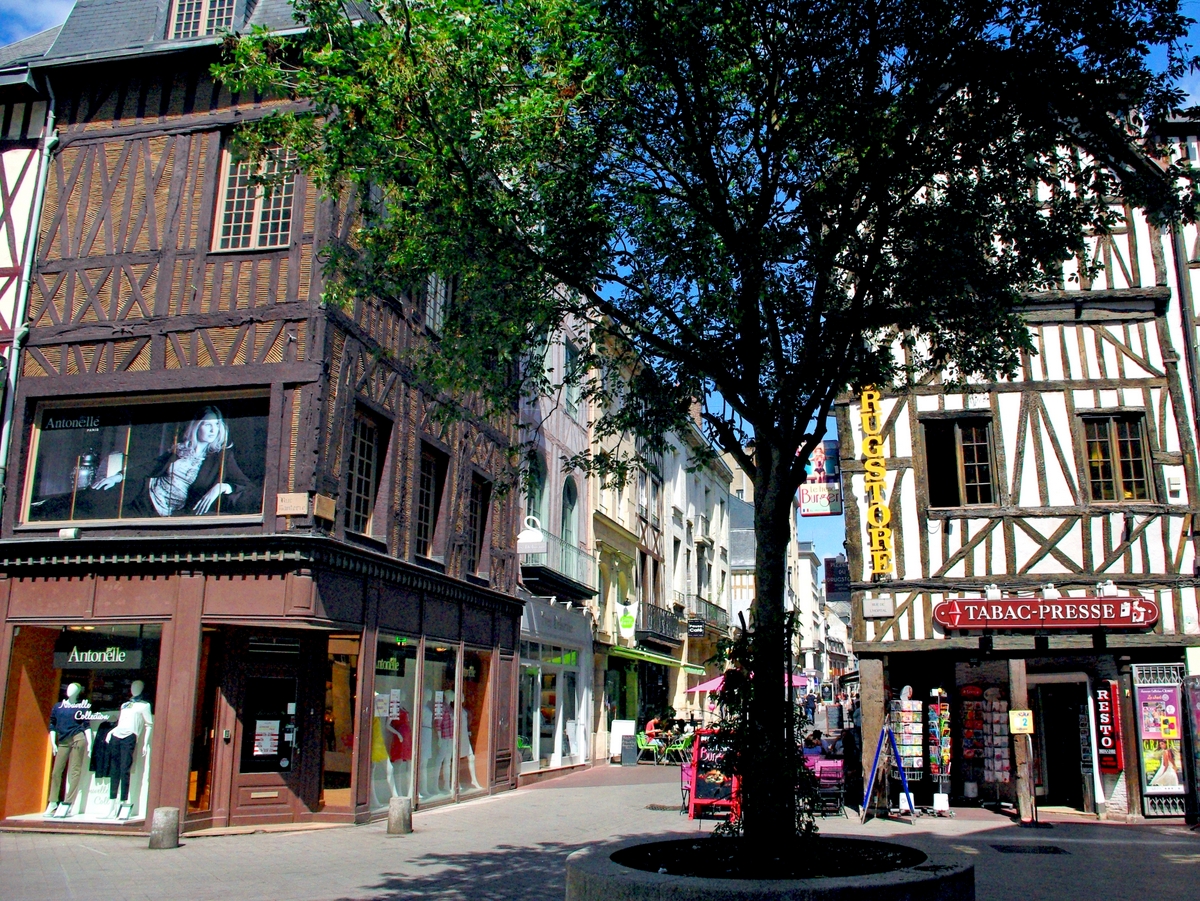
Place Saint-Amand
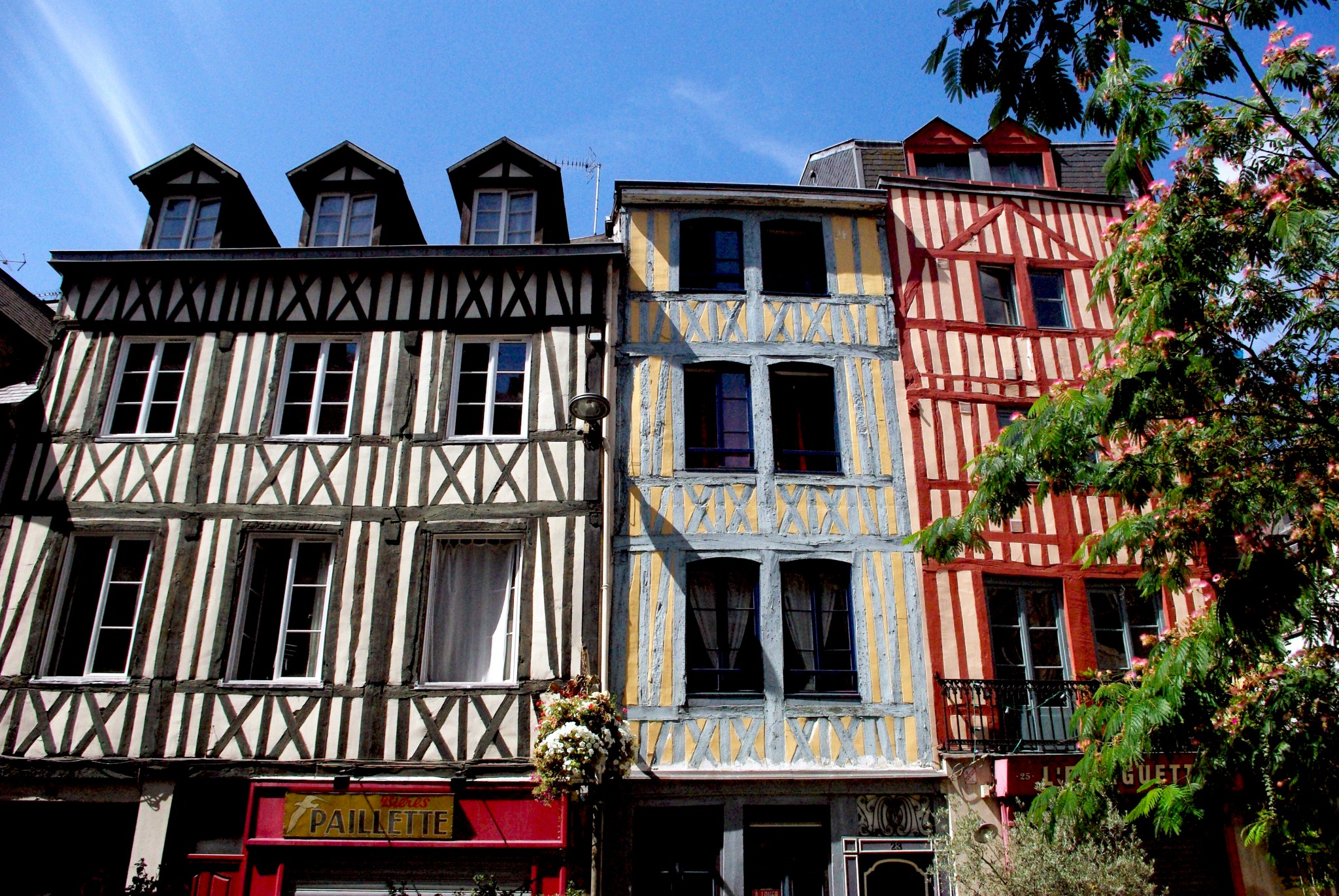
Rue Saint-Amand
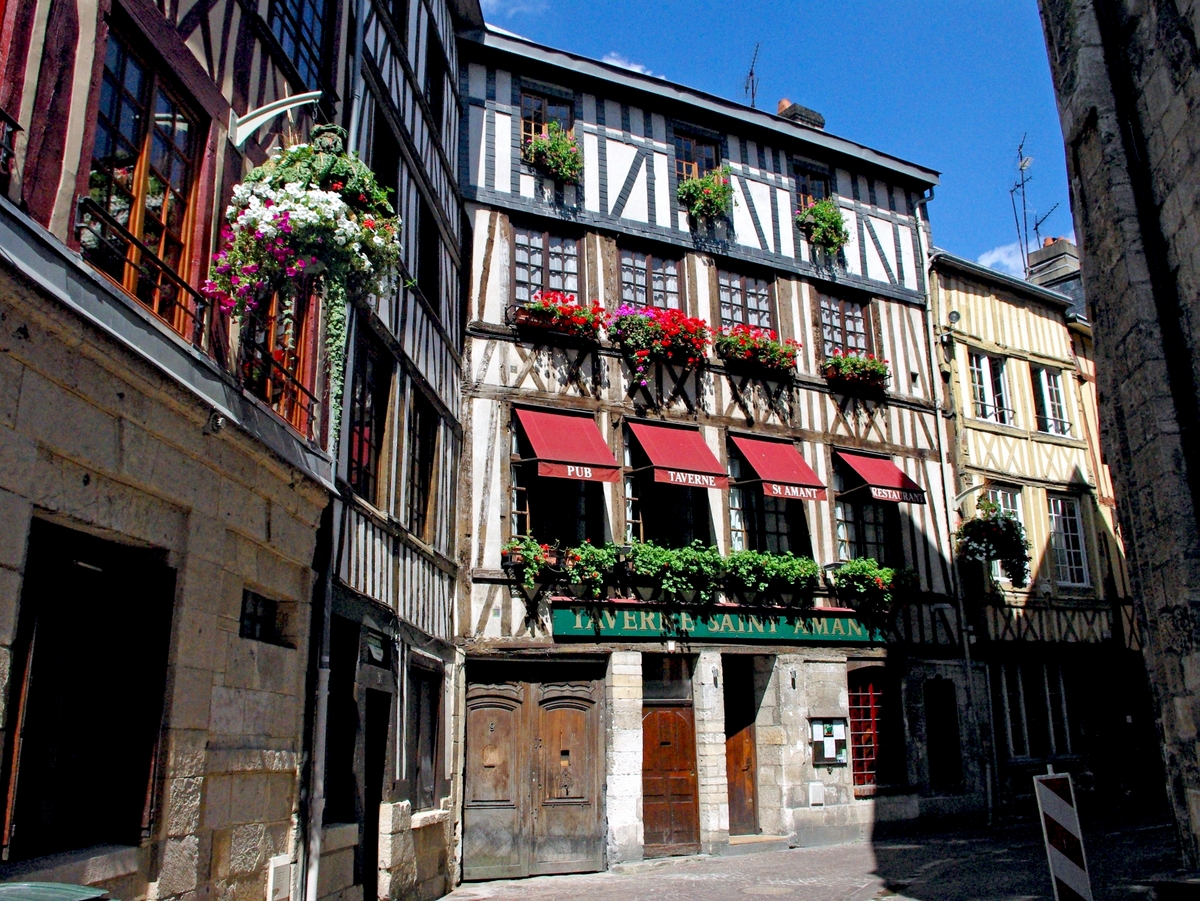
Place du Lieutenant Aubert
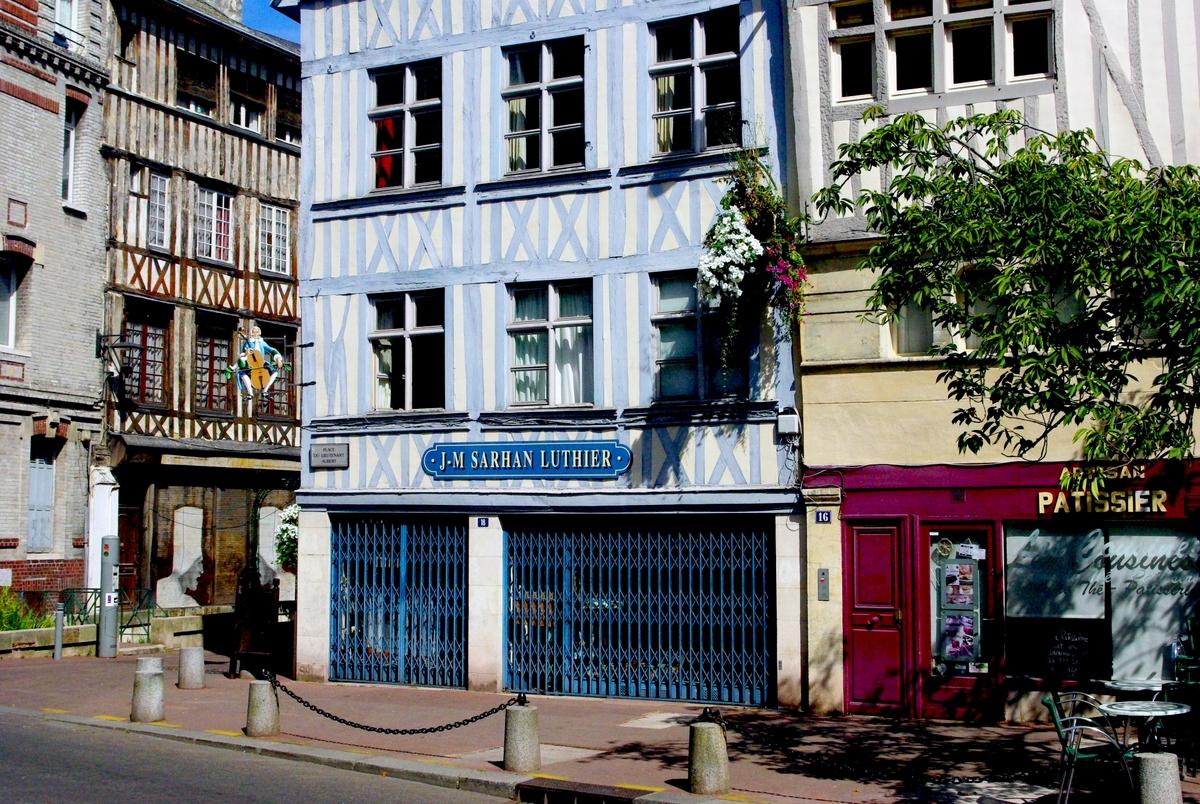
Rue des Bons Enfants
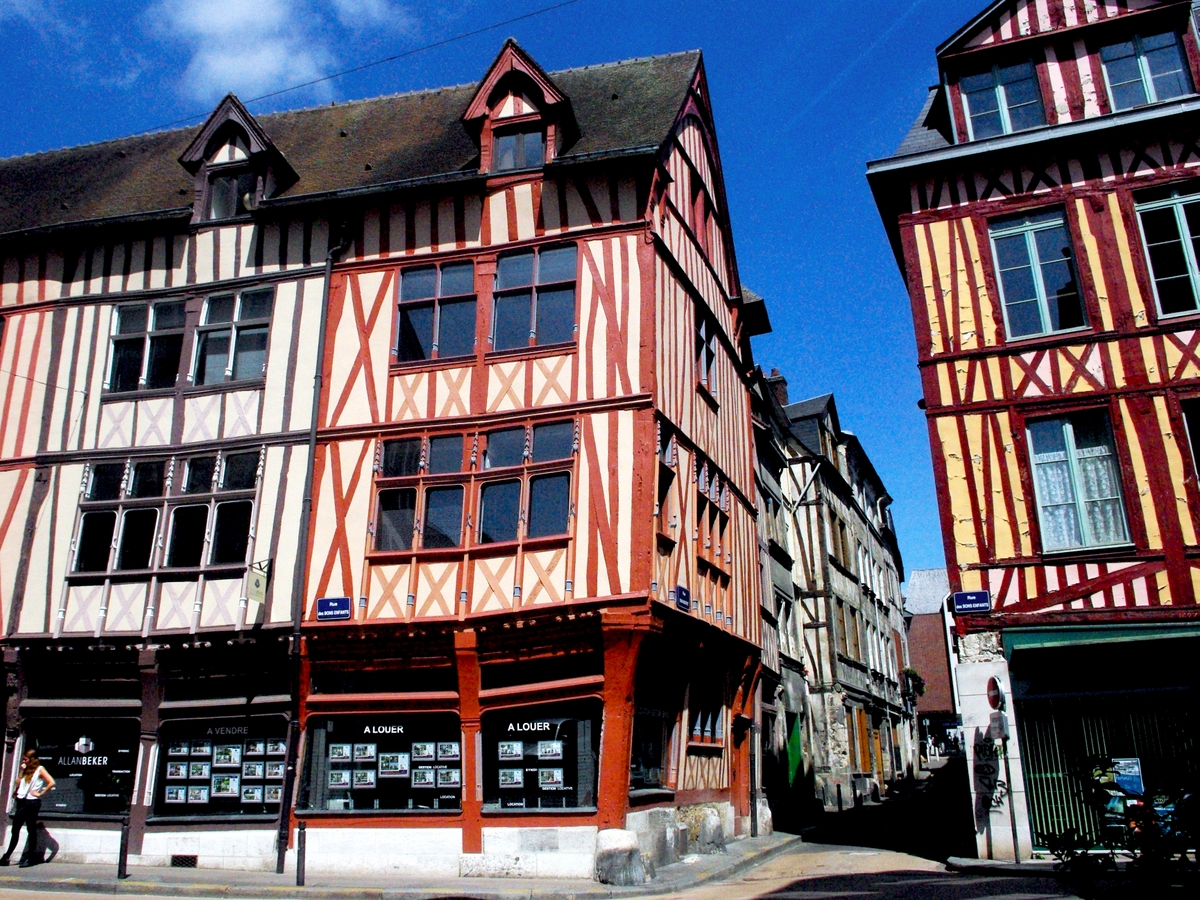
Place de la Rougemare
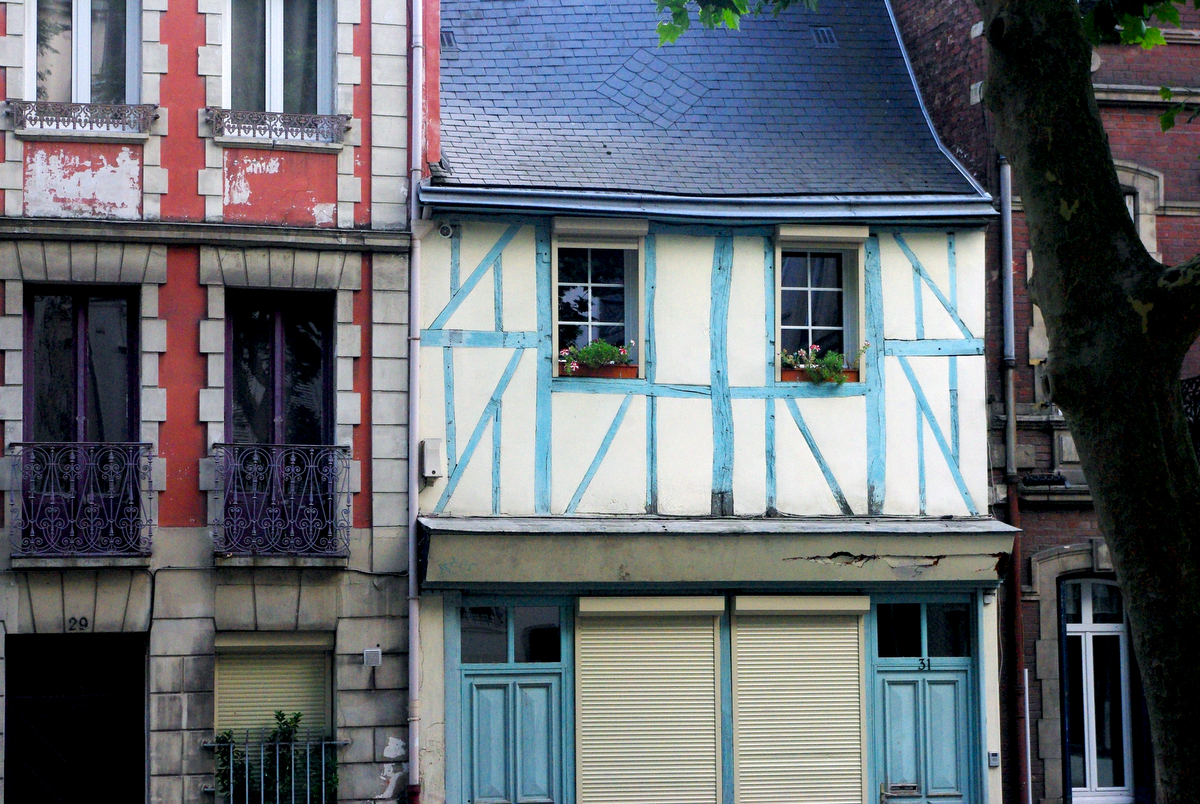
Gardens of Rouen’s Old Town
The city centre of Rouen is a dense area where parks and gardens are quite rare. Therefore there are three parks worth mentioning: the Albane garden flanking the cathedral, the Square Verdrel and the Gardens of the City-Hall.
The Albane Garden of the Cathedral
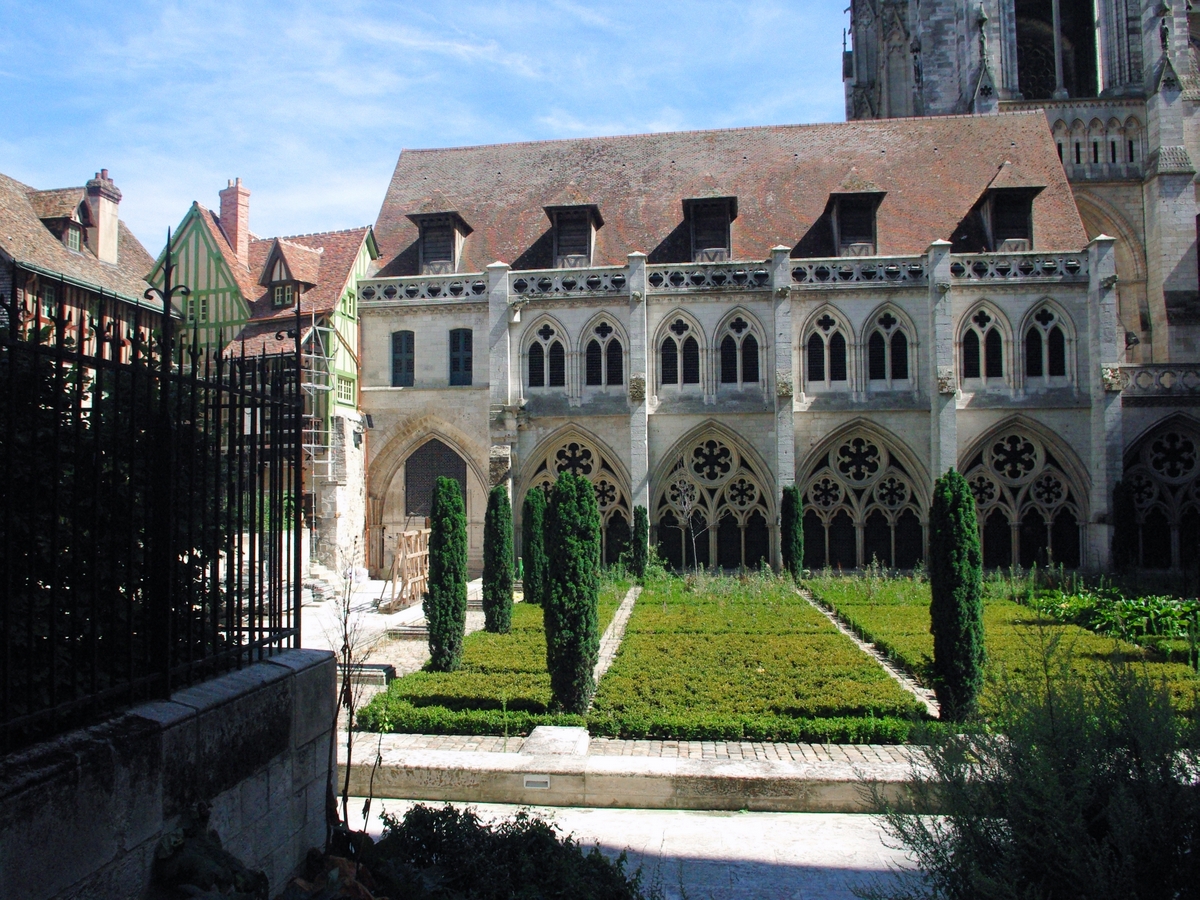
The garden is in fact the site of a cloister of which the only completed part was the eastern gallery. This green space is now known as Cour d’Albane and was recently renovated.
Square Verdrel
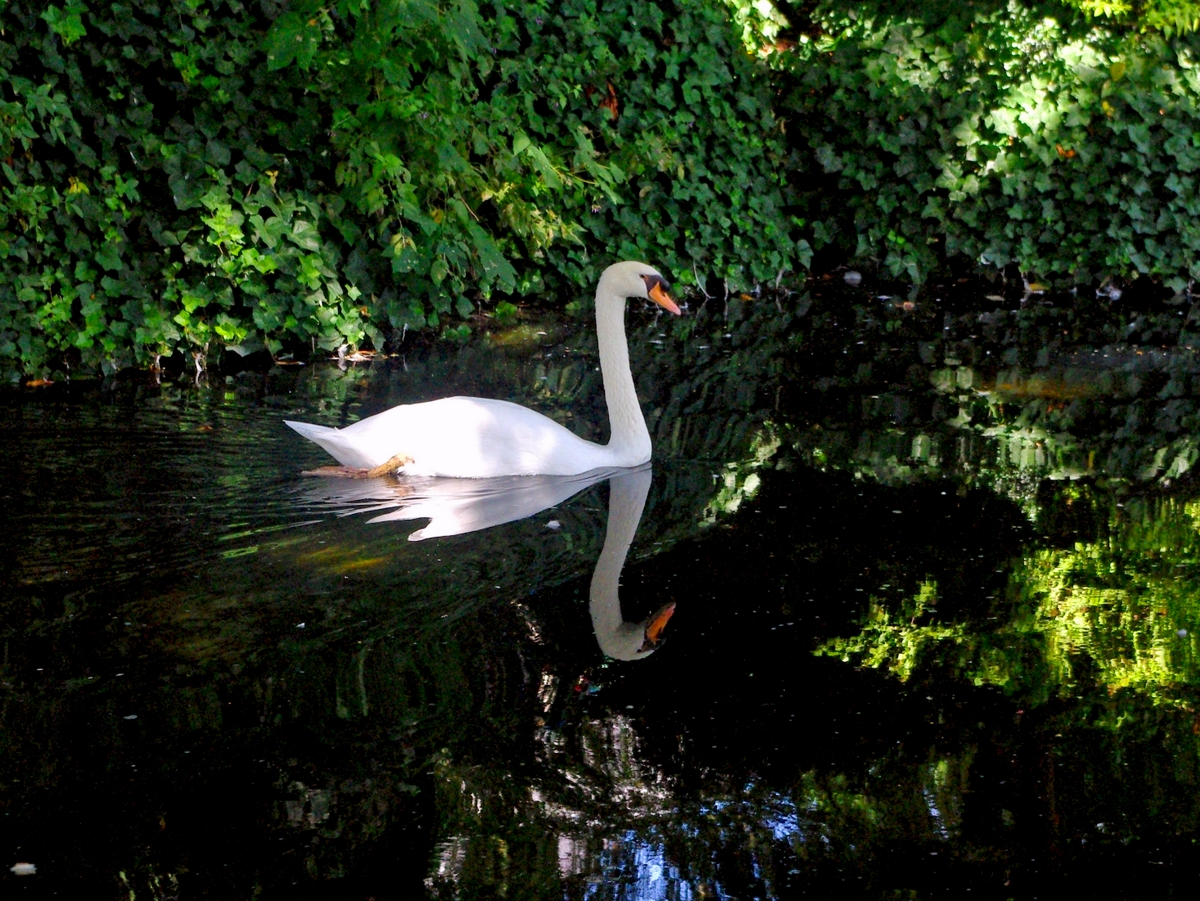
Square Verdrel is a public garden of 9,000 m2 created by Émile Beaucantin during the Second Empire and inaugurated in 1863 by then Mayor of Rouen Charles Verdrel. It is located between the Fine Arts Museum and the rue Jeanne d’Arc. It features a small water pond surmounted by rocks and a waterfall.
The Gardens of the City-Hall
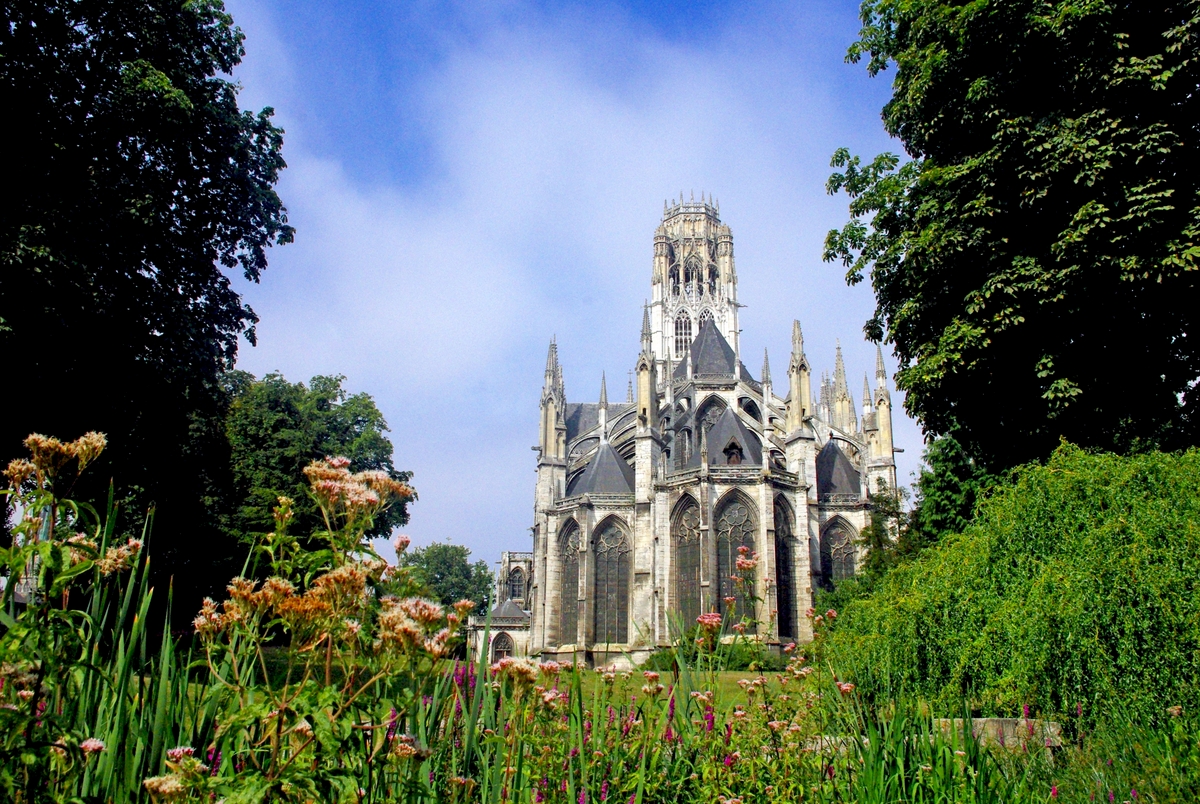
The City-Hall gardens (Jardins de l’Hôtel de Ville) is a public garden situated at the rear of the City-Hall and the abbey church of Saint-Ouen. Extending over 26,000 m2, it offers superb views over the chevet of the church and to the classical building of the City-hall. Access to the gardens are from rue des Faulx and Place de la Pomme d’Or. The gardens were part of the abbey of Saint-Ouen which disappeared during the French Revolution.




Pierre,
Thank you for this blog post. Rouen was the first stop of our bus tour of Normandy 2 summers ago. It was wonderful revisiting these amazing sites and buildings through your lens. I am reminded again of the history and importance behind the many photos that I took during our tour.
Merci beaucoup!
You’re welcome Joanne! I loved Rouen and have taken so many more photos… and you’re so right, it’s makes it all worthwhile to understand the history of the monuments and houses we’re photo shooting! 🙂
Dear Pierre,
I visited the fascinating city of Rouen briefly in 2016 and 2017. In browsing my photos just now I came across one of a distinguished building – some kind of market hall with a centrally-placed Renaissance (?) five-tier staircase. which I think is in La Place de la Haute Vielle Tour, off Rue de la République. Can I send you my photo please to see if you can identify it?
Thanks very much in advance.
Sure, send it to me at info @ frenchmoments.com (without spaces!). Cheers.